



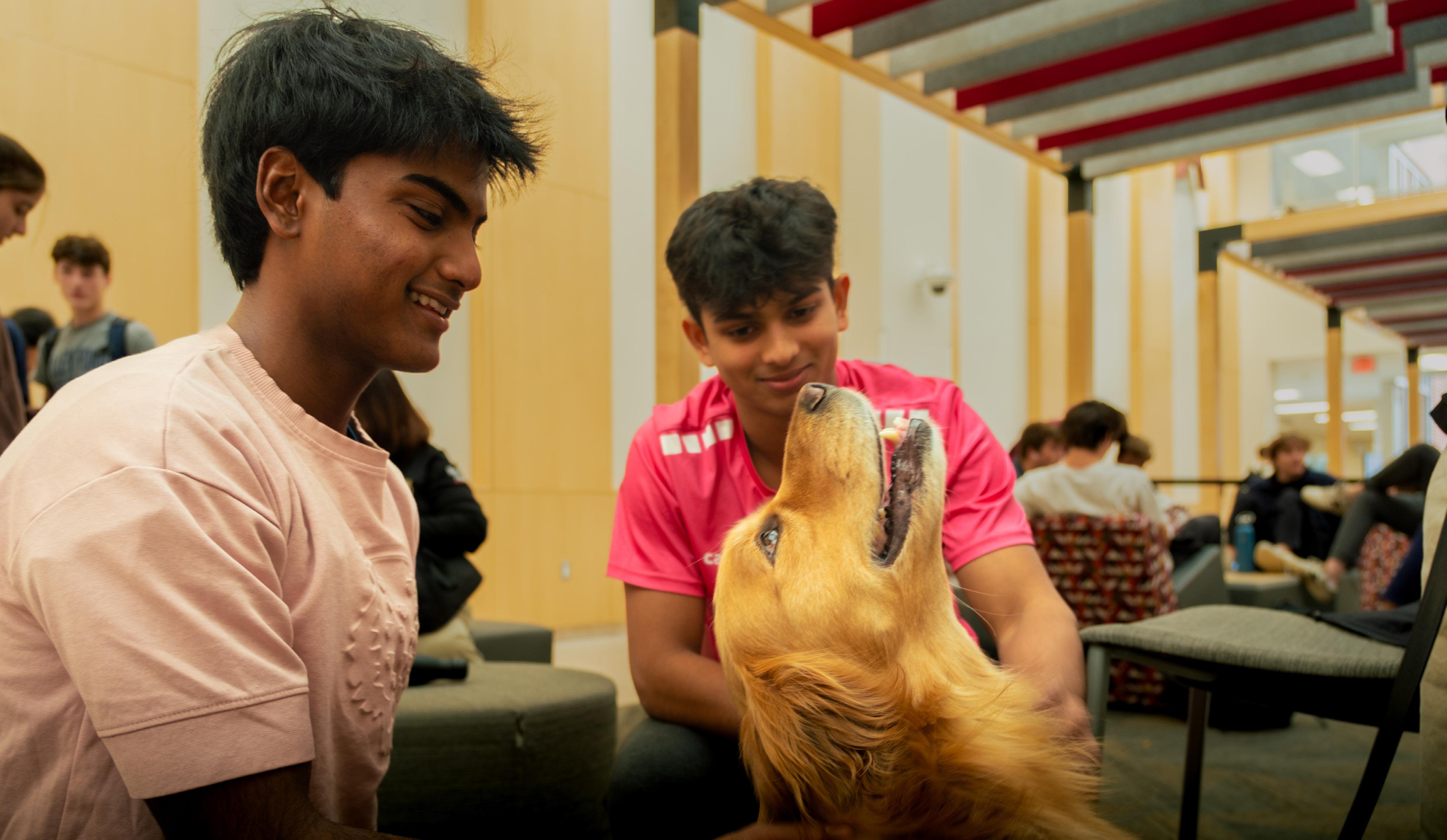






By Sophia Cui, Rajan Saha and Nolan Talley, Co-Design Editor, Co-T/E Life Editor and Webmaster
Throughout the weeks leading up to this school year’s second monthly “Wellness Wednesday” on Oct. 29, senior Krtin Ashokkumar, vice president of mental health club Hope and Beyond, helped plan the day. He collaborated with representatives from other mental health clubs and
school administrators to craft a day with activities focused on promoting student mental health, during which wellness clubs organize events and teachers avoid giving out tests or quizzes.
“I think that mental health is extremely important for Conestoga students because the school is known for its academic rigor and competitiveness, which can lead to high levels of stress, and students often balance multiple responsibilities,” Ashokkumar said. “When that pressure builds, I think mental health can really suffer.”
Recently, Conestoga administration has addressed students’
For the 2025-26 spring sports season, Conestoga will officially open all of the sports facilities included in its more than $28.7 million Athletic Fields Project.
A ribbon-cutting ceremony occurred on Sept. 24 for the opening of the first turf field, which has since hosted several practices and games. Besides a newly resurfaced track, the rest of the facilities are still at varying stages of construction, and all are expected to open in the coming months prior to the start of the spring sports season.
The completed project will include two new turf fields, one grass field, one softball field and batting cage, five tennis courts, and an athletic field house that will include locker rooms and training facilities. Although not part of the original project, the resurfaced track will also open.
“It’s going to be a really great luxury for our kids to be able to walk out of school, walk out the door, just be at the field and play,” athletic director Kevin Pechin said. “In prior years, we’ve had to rent facilities. Now we’re on site, we’re on turf, we have the best surface available. Everything (will be) a one-stop shop.” The project’s planning process began in 2020, after the district conducted studies on comparably-sized schools’ athletic facilities and solicited feedback from Conestoga’s student athletes.
From its research, the school board determined a sports facilities update was necessary and
mental health in various ways, such as altering the bell schedule, creating a mental health committee with the school’s mental health clubs, adding a wellness day at the end of each month and hiring more school counselors.
Last year, the district introduced the new mixed-model schedule, which implemented block scheduling and an hourlong “Lunch and Learn” period on Wednesdays and Thursdays.
According to principal Dr. Amy Meisinger, one way Lunch and Learn aims to help alleviate stress is by creating a time for students to relax, study, meet
with teachers or friends, and attend club meetings.
“Lunch and Learn is something that we put into place so that students (have) more opportunities for interaction and to get things and needs addressed, or to combat some of the stress that we saw because kids couldn’t meet with teachers because (they) didn’t have the same free period,” Meisinger said.
Based on a survey The Spoke published on Oct. 16, 36% of student respondents listed Lunch and Learn as their first choice when asked to rank school initiatives on how beneficial they were
to their mental well-being. (see Fig. 2 on page 3).
“On a block day, we have Lunch and Learn to do activities (related to mental health) within the classroom,” said student activities administrator Dr. Nicole Jolly. “Utilizing the block day is really helping the students (and is) giving them that time in the middle just to breathe, reset and move forward.”
In 2023, the school administration implemented a day to focus on student mental health on the last Wednesday of each month. Last year, the day occurred on the last Tuesday of each month, due to it being the first year of the
mixed-model schedule. For this year, the school administration decided to move the day back to the last Wednesday of the month.
The addition of the longer periods from the new block schedule allowed Wellness Wednesday schoolwide activities to occur during the 80-minute classes and Lunch and Learn. October’s Wellness Wednesday included a pink spirit day, mental health activities during homeroom and Lunch and Learn, and free stress balls and candy in the student services department.
ness for
Behind many of these changes were larger national efforts to increase mental
school students. Counselor Jennifer Kratsa feels that Conestoga students’ mental health is part of a larger issue and the school aims to help students by providing resources to aid them if needed.
“Mental health is not a problem at Conestoga only. This is a national problem that T/E is addressing,” Kratsa said. “And with the resources that we have, we’re able to have a lot of resources in place to help students, which is ultimately what we want.”
received preliminary approval for the project in 2021. Members then worked with the athletic department and district-hired architectural firm to acquire land, get township permits and complete other logistics before officially beginning construction in April 2024. According to Pechin, the school originally expected to complete the project in time for the fall 2025 sports season, but the timeline for opening was pushed back due to delays. There’s always delays when you have that many contractors on a site that are all contingent upon each other’s trades getting done on time,” Pechin said. “We’re fortunate enough that we’re finally up to speed, but that was sort of a challenge because it wasn’t just one company (but) a lot of different companies trying to piece
together this whole project so it becomes one solid puzzle.”
Following the first field’s opening in September, the field hockey, soccer and football teams have held practices and games on the new turf. While the varsity teams’ games continue to take place on Teamer Field, junior varsity and freshmen teams have hosted games on the new field.

to athletes, and teams will continue to practice and play non-varsity games on them. Additionally, the school will be able to host meets and practices on the resurfaced track, as well as on-site practices and games for the tennis teams.
“I’m really excited about the new tennis courts. I think that they’ll be really helpful in the sense that we’ll get to start practice earlier and it’ll just be easier for games overall,” said freshman Vivienne Eagleson, a member of the junior varsity girls tennis team. “Right now, varsity and JV play their games at the YMCA, but in the future, varsity will just play at the school and JV will play at the (YMCA).”
According to Pechin, the completed project will also make scheduling practices and games significantly easier for the athletic department. Currently, the school transports many athletes, trainers and equipment offsite, but in the spring, there will be immediate access to on-campus facilities.
“It was scary in the beginning, when this whole thing started, because it was a really, really big (project),” Pechin said. “What’s been the most rewarding is seeing it come to fruition. Seeing it go from all those trees and everything to the actual designing, the implementation, the putting down the turf. It’s been really impressive to see what it’s become. And knowing that our kids are going to have one of the best athletic facilities in District 1, if not the state, makes me feel very proud.”
Activities Office Adjusts new club prOcess
On Oct. 1, the Conestoga Activities Office began accepting new club requests. In contrast to previous years, the form is completed online using a fillable PDF linked on Schoology and the district website. In addition, the office has removed the requirement of obtaining signatures from students who are interested in joining in order to start a new club.
tOwnship hOsts
first Art exhibit
The Tredyffrin Township Arts Commission’s first exhibit at the Tredyffrin Township building began on Sept. 29. Community members attended the opening reception on Oct. 10, with art pieces from local artists featured until Dec. 11. Residents can vote on a painting to win the People’s Choice Award.
supreme cOurt tO
cOnsider heAring
sAme-sex mArriAge cAse
The U.S. Supreme Court scheduled a private conference to decide on hearing a case brought by Kim Davis. If heard, the case would consider overturning the 2015 Obergefell v. Hodges ruling that guarantees nationwide same-sex marriage rights. If the court hears the case and overturns the decision, marriage rights would be determined by states.
netflix hOuse tO Open in King Of prussiA mAll
A 100,000 square-foot location of Netflix House, featuring experiences related to the shows available on the streaming platform, is set to open later this year. The area will be located in the King of Prussia Mall. The entertainment venue began offering presale and general ticket sales in October.

Picnic tables and a rotating whiteboard called a “learning kiosk” await in a new outdoor learning space available for middle school teachers and students.
In 2024, the non-profit organization Stroud Water Research Center awarded a $2,200 grant to each of the middle schools for the construction of outdoor learning spaces.
Since June 2024, teachers and students have collaborated to build these spaces at the middle schools. During the May 13 facilities committee meeting, Boy Scouts senior Kyle Joers and sophomore Zach Engstrom, along with gifted support teachers Irene Clemmer and Dr. Jothi Strohmetz from VFMS and TEMS respectively, presented on the outdoor spaces and their construction.
“It’s beneficial to students, learning outside and being outside,” Joers said. “There are a lot of lessons that could be good outdoors for some science teachers, and just having a class outside one day for fun is a nice thing to be able to do.”
Both middle schools applied for the grant separately, and Stroud Water Research Center
granted the funds using money from the PA Department of Environmental Protection’s Environmental Education Grant Awards. In order to receive the grants, the district also had to match $1,000 for each middle school, including materials and workshop time for faculty who
attended workshops at Stroud Water Research Center and helped with the outdoor learning spaces.
The VFMS space was ready for use at the end of September, consisting of a pollinator garden, a kiosk and outdoor seating. Clemmer incorporated
the planning of the space into her eighth grade gifted seminar students’ curriculum last year, teaching them about grant writing and setting up the pollinator garden. In mid-August, freshmen Jamie Bennett, Adam Nixon and Alex Nixon worked with their fathers to build the kiosk.
Clemmer hopes that future students will maintain and add on to the outdoor space as well.
“It’s always a good thing for the kids and the teachers to get outside, just to have the fresh air and to look forward to a change of place,” Clemmer said.
“We’re looking at having some

kind of a system off the roof with gutters and stuff to collect rain. Then the idea is that if the kids see that at school, maybe they’ll go home and talk to their parents about also doing it, so it’ll spread to the community.”
The TEMS space currently contains picnic tables, a pollinator garden and a storage box. Constructors built the pollinator garden throughout last school year, with science classes planting and labeling the garden on May 23. Funded by his family, Joers led the construction of six picnic tables for the space on Aug. 9 for his Eagle Scout Service Project. Similarly, Engstrom plans to construct the learning kiosk for his project either by the end of fall this year or spring next year. Clemmer and Strohmetz set
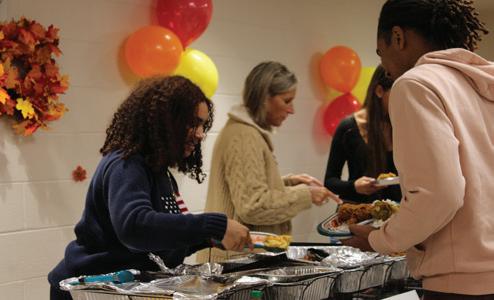
In late September, the West Goshen Police Department and other local departments in Chester County adopted the Blue Envelope Program, an initiative that aims to help drivers with autism spectrum disorder (ASD) navigate traffic stops more smoothly. The program provides drivers with a blue envelope, which drivers can store their driver’s license, vehicle registration, insurance card and emergency contact information. The envelope signals to officers that the driver may need additional support such as extra time or specific accommodations during the stop.
Chief of Police Michael Carroll of West Goshen Police Department facilitated much of the Blue Envelope Program’s integration. His inspiration came from an encounter at the 2024 9/11 Heroes Run in West Chester.
“I ran into a gentleman whose son was running the race, and he had autism,” Carroll said. “And he asked me if I knew anything about the blue envelopes: I told him that I didn’t. He explained what they were.”
After further researching the initiative, Carroll secured funding through the Chester County Chiefs of Police Association and the county’s Fraternal Order of Police. The department has since printed over 5,000 envelopes for distribution throughout Chester County.
While not every department has picked up the envelopes, all in Chester County have access. If needed, drivers can request an envelope from their local police station, and if the station does not have envelopes in hand, officers know where to direct residents to acquire them.
Although the Blue Envelope Program was originally designed to help autistic drivers, it
also expanded to support people with other conditions such as hearing loss or early-stage dementia. The West Goshen Police also hold community meetings three to four times per year, where officers share departmental data about concerns like vehicle stops and arrests to promote transparency with the public.
“Since 2020, we’ve been doing everything we could to make ourselves more appealing to the public and to make our jobs more easily understood,” Carroll said. “And for us and the public to get along a little better, so this is just another step in that path.”
While the program is relatively new, the community has given encouraging feedback.
“I’ve gotten a woman who picked up an envelope and gave it to her son,” Carroll said. “We got a picture of her son holding a blue envelope in his car, and seemed pretty thrilled to have it, so that was nice.”


On Oct. 2, the doors to a new Eataly location opened at the King of Prussia Mall, allowing a flood of customers to swarm in, bringing a taste of Italy to the local community. Founded in 2007, the Italian-inspired company is built upon the philosophy of “Eat, Shop, Learn.” Eataly is a worldwide brand with each location designed to offer a unique experience.
Enrico Prodi, Senior Director of Operations of Eataly in the East Coast Region, wrote in an email how the Eataly at the King of Prussia Mall is different compared to other Eataly locations.
“Each one of our Eataly locations is unique and especially curated for the specific location,” Prodi wrote. “This can be from the layout and design to the types of counters or restaurants we offer. In addition, we make sure to build strong relationships
with small businesses, vendors, chefs and more in every market that we’re in. For Eataly King of Prussia, we sourced local items to carry in our retail marketplace such as produce, dairy and cheese products, and beer.”
Senior Mady Edwards went to the King of Prussia Eataly and emphasized the cultural importance of its presence to the community.
“I think it’s really important to showcase different cultures in an area that is so diverse as Wayne and King of Prussia and Paoli to have peoples’ culture represented,” Edwards said.
The King of Prussia Eataly’s layout divides the store into distinct sections. Visitors can enjoy a gelato and sweets area, explore a marketplace stocked with Italian ingredients and dine at an on-site restaurant serving traditional dishes. Freshman Olivia Edwards has visited Eataly and feels that this structure enhances customer experience.
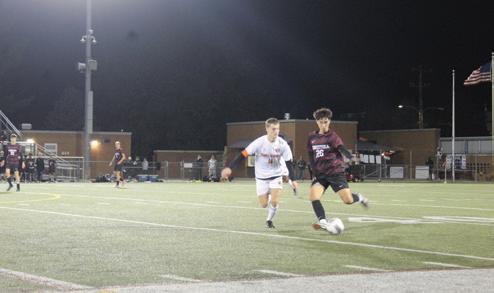
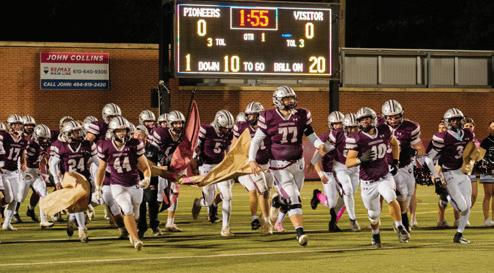
“I think it makes it very versatile for everyone because even if you’re not going for a sitdown restaurant, you can still pick up food really quickly and try it even if you don’t have time to sit down or if you don’t really want to,” Olivia Edwards said. Eataly also offers cooking classes where guests can learn to prepare authentic Italian meals. Mady Edwards appreciates the cultural emphasis.
“I think it adds another cultural aspect because there are a lot of different cultural foods other than your straight up American,” Mady Edwards said. “And to have another Italian place at the mall is really cool.”

On Oct. 1, the U.S. government shutdown took effect as lawmakers failed to pass a federal budget before the beginning of the Fiscal Year 2026. Combined with Pennsylvania’s state budget impasse, the shutdown had economic impacts on the commonwealth. Pennsylvania began a state budget impasse in July due to conflict over educational and transit funding. Partisan divide in the federal government led to the nationwide shutdown. Some Democrats advocated for continued funding of social programs while Republicans generally proposed cuts to non-defense expenses. Both the federal and state budget stalemates led to financial stress on Pennsylvania schools. “Across (Pennsylvania), school districts that are more reliant on state and federal funding are borrowing funds to keep operating close to $2 billion so far,” said Dr. Roberta Hotinski, chair of the fi-
nance committee on the TESD school board. “That translates to millions of dollars in interest payments that will need to come out of their budgets.”
According to Hotinski, Chester County is expected to be minimally impacted by the shutdown. As the primary funding in Tredyffrin-Easttown is from local revenue and a fund balance of $30 million is available, the district can continue operating normally.
“Because our district receives such a small percentage of the budget from the federal government, we don’t expect to experience major financial impacts from the federal shutdown in T/E schools. However, members of our community who benefit from other federal assistance (like SNAP) may be impacted if the shutdown continues,” Hotinski said.
The shutdown influenced Federal Assistance initiatives such as the Supplemental Nutrition Assistance Program (SNAP) and the Supplemental Nutrition Program for Women, Infants and Children
which did not receive funding after October. Federally funded programs administered by the state, including health, housing and employment plans, may face challenges amidst limited budgets. The Pennsylvania government stated they did not have the means to fill the gap from federal funding, meaning that communities within the state could lose their access to these programs.
Representative Melissa Shusterman, a Democratic member of the Pennsylvania House of Representatives, feels that political unity and compromise will allow the government to resolve its issues.
“Currently at the state level, our biggest obstacle, from my viewpoint, is that the Senate Leadership seems unwilling to compromise,” Shusterman said.
The State House sent three bipartisan bills to the Senate within 100 days. Representatives from the state Senate were unable to form an agreement.
While Chester County did not face significant economic
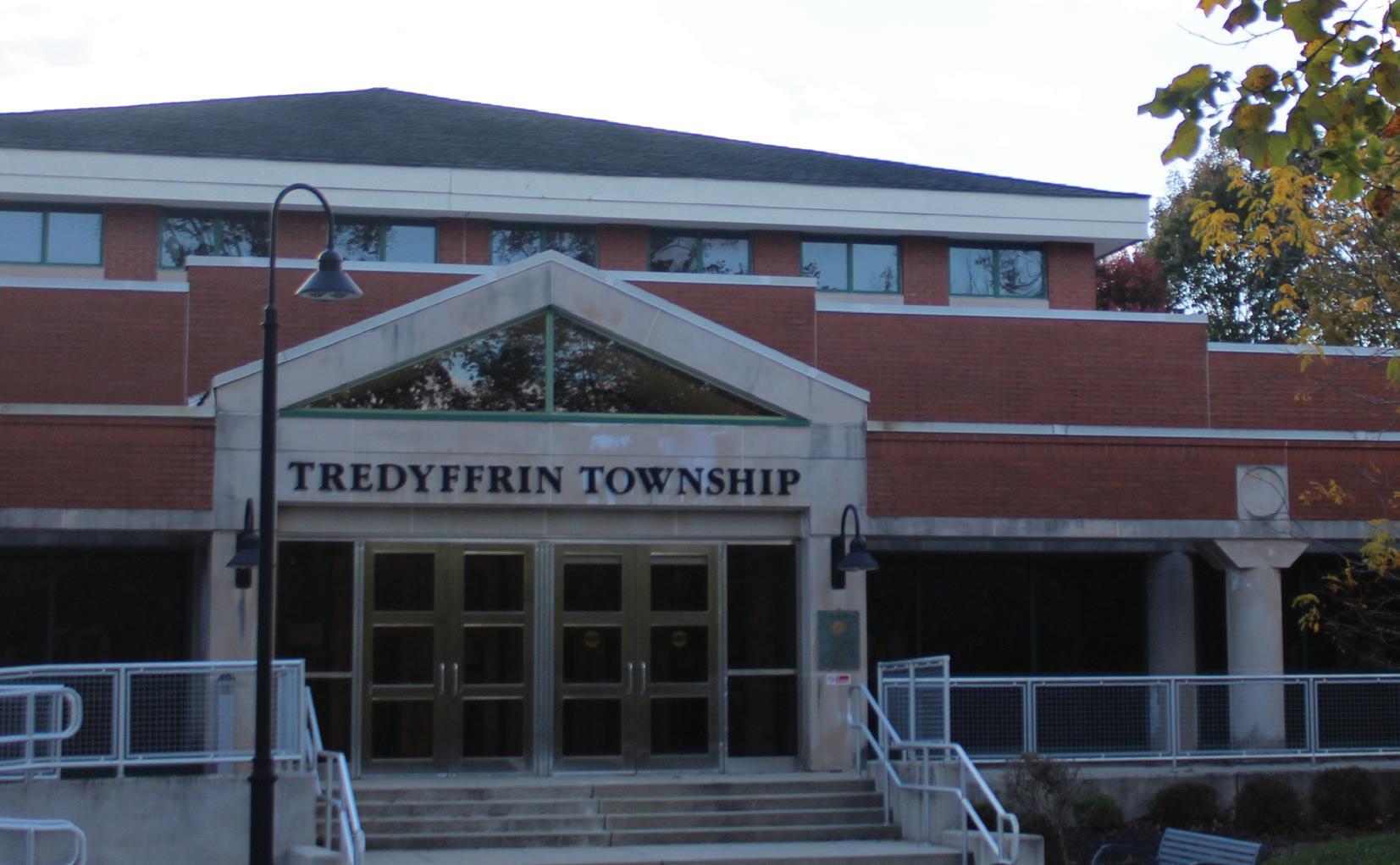
District implements mental health-driven changes
The district and Conestoga administration have enacted changes to the school’s schedule targeted at addressing student mental health concerns. In 2023, the school implemented dedicated testing days to try to alleviate the pressure students would feel when multiple classes had tests on the same day. While testing days were in place, the administration would designate specific cycle days when only certain academic departments could administer exams.
Receiving feedback from students who found that testing days increased stress due to restricted exam scheduling flexibility, school administrators removed testing days. Following the removal, administrators looked at other options to alleviate student stress.
Before implementing Lunch and Learn and the mixed-model schedule, the district worked with the Chester County Intermediate Unit in 2023 to survey the effects of the previous eight-period schedule. Survey results showed that student workload was the biggest struggle and the highest cause of stress for students.
“The stress levels prior to the change of schedule were so significant,” mental health specialist Dr. Nicole Dunleavy said. “Kids were constantly talking about going from one class to another class to another class, eight periods a day, and then going off to their sport, going off to a job, not
schedule and found that 83% of students agreed that the block schedule facilitated a school climate that promotes student well-being, a 14% increase in agreement from before the implementation of Lunch and Learn. In addition, 82% of students agreed that Lunch and Learn provided time for them to take a moment to relax.
“Lunch and Learn is definitely a positive,” junior Ian Choi said. “Even if I don’t have to meet with teachers, I can just catch up on work in the library (and have) a nice chunk of time.”
Conestoga continues, expands resources to aid students’ well-being
Alongside piloting changes to certain aspects of school operations and scheduling to improve student well-being, Conestoga already has efforts in place to support students’ mental health.
Conestoga currently requires students to take a health class and a College-Career Transition (CCT) class. In these classes, teachers cover a mental health unit and a Signs of Suicide (SOS) program. The two courses discuss various mental health disorders, different signs of depression and anxiety, and how to seek help if someone is experiencing suicidal thoughts.
“It (the mental health unit) is very needed because many mental health challenges or disorders seem to manifest or start showing early signs in this ado-

lescent age. If somebody is experiencing symptoms of, let’s say, obsessive-compulsive disorder, are they just learning about it in health class, and it resonates with them, and they say, ‘Hey, this sounds familiar.’ I think it’s good recognition for students to just learn about different mental health challenges,” health teacher John Jones said.
To build on the mental health lessons in the health and CCT classes, the school brings in guest speakers from Minding Your Mind, an organization focused on bringing individuals who have experienced hardships such as depression, anxiety and drug abuse, to talk about their hardships. In an effort to help families, the mental health specialists inform and teach parents about the SOS program and bring in guest speakers to discuss mental health throughout the year.
In addition, the student services department operates a Stu-
dent Support Committee (SSC) and a CARE Team. Both groups consist of administrators, teachers, mental health specialists, counselors, psychologists and nurses. The school formed SSC to address ongoing student support needs across the school, and CARE is part of a state-mandated Student Assistance Program that focuses on students showing signs of emotional, behavioral or academic distress. According to Dunleavy, a member of the CARE team, the group gathers information from the student’s teachers and parents to determine the next steps in aiding the student’s mental health, such as counseling or referral to outside mental-health resources.
“We make sure we dialogue as a team and make sure we put the right intervention in place. Sometimes that’s meeting with the counselor. Sometimes that’s meeting with a mental health specialist. Sometimes that’s a re-
ferral to the CARE team to do some more groundwork to get more information, depending on the nature of the concern,” Dunleavy said. “If it’s an immediate concern, we move it to the counselor and mental health specialist. If it’s, ‘Hey, we don’t really know what’s going on,’ the CARE team allows us to gather more observable information.”
Along with operating the CARE team, the school hired two more counselors to meet the student-to-counselor ratio of 250:1 recommended by the American School Counselor Association (ASCA), increasing the total number of school counselors to 10. This expansion allows counselors to provide more individualized attention, shortening response times for student concerns. The Spoke’s data indicated that around half of the students surveyed agreed that Conestoga’s mental health resources are accessible.
“This school puts a priority on kids feeling good, and that’s why here (the administrators) are willing to put resources so that if you come down and need to see your counselor, (and) there is a problem, you’re going to see someone,” Kratsa said. “Putting a priority on making sure that we can see our kids, we can get to our kids, that’s important at our school.”
Conestoga clubs promote mental health awareness, students react to district efforts
Alongside district initiatives, student organizations are also taking action to prioritize stu-
dents’ mental health. Last year, senior and president of Hope and Beyond Venu Dhanabal collaborated with school administrators and mental health specialists to form a committee that would work to improve the mental health environment in Conestoga. The mental health committee works with the school to help plan Wellness Wednesday.
In May, Hope and Beyond organized a Green Ribbon Awareness Campaign for Mental Health Awareness Month. Club members gave out green ribbon pins to homerooms, a symbol of unity in addressing mental health, in hopes that students would wear them on their backpacks and show their support for the movement.
“I think the green ribbon really showcased our unity as a school,” Ashokkumar said. “Everybody shows up, they support the movement and they wear the green ribbon because it’s something so simple. But it takes a lot, (since) you’re here ready to support the little things that really matter.”
Peer Mediation also organizes two annual events, Cornucopia and Unity Fair, to help provide a break for students and focus on their wellbeing. These events include collaboration from clubs and teachers to organize various activities that encourage positive mental health, such as coloring rooms and playing sports. The Unity Fair also features a school-wide assembly at the end of the day to foster school spirit, where teachers and students compete in teams.
“Cornucopia is a nice time for kids to relax,” said junior Ayanka
for Peer Mediation. “They (students) get to spend time with their friends. It’s kind of like a social bonding experience, basically. It helps to alleviate that stress that (students) might feel.”
Despite the events and mental health efforts from Conestoga clubs and administration, students in general remain divided over whether Conestoga’s resources for mental health are effective. From the total respondents, 39.6% of students were neutral on the issue, while a roughly equal percentage of students agreed and disagreed (see Fig. 1).
Additionally, a majority of students felt course load could be improved to support student well-being, followed by grading practices, classroom management practices and support systems (see Fig. 3). Dhanabal emphasized the importance of a continued focus on student mental health as a future goal for the school and its student organizations.
“I want to see mental health being talked about more,” Dhanabal said. “I don’t want people to think about mental health only when it’s Wellness Wednesday. I want them to think about it constantly. I want them to make sure they’re taking care of themselves constantly, not just on one set day of the month. I think that would be the biggest goal we have: To get people to talk about mental health, to get people to think about mental health and to get people ready to reach out for the help they need.”
On Sept. 24, the Chester County Board of Commissioners passed an ordinance to establish a Human Relations Commission with a two-to-one vote. The ordinance aims to stop county-wide discrimination and ensure equal opportunity for all residents in areas of employment, housing and public accommodations.
“It’s important that everyone feels welcome in Chester County, whether it’s folks who are immigrants, descendants of immigrants, members of the LGBTQ+ community, people of any background,” said Josh Maxwell, Chair of the Board of Commissioners. “I wanted to make sure that people outside and inside Chester County know that everyone’s welcome here and has protections.” With the approval of the ordinance, the Chester County Board of Commissioners expanded the list of protected classes under state law to include protections based


income, veteran status, and status as a victim of domestic or sexual abuse. The process of drafting the ordinance started in the spring and continued for sev-
eral months under the guidance of attorneys.
“We (the Chester County Board of Commissioners and attorneys) started researching other counties that had done things
not just doing something for show,” Maxwell said. The Chester County Board of Commissioners will appoint seven to 13 Chester County residents to serve three-year terms on the Human Relations Commission.






The online application process located on the Chester County website opened in late September and will continue to accept applicants through November.
“We’d like to have a variety of ages, young people and older people. We’d like to have some people that are in business, because it does affect business, and some people that maybe feel more threatened at this very moment. People from the LGBTQ+ community, people that are from another country that have U.S. citizenship here,” Commissioner Marian Moskowitz said. “We want to have a nice, rounded group of people.”
The Chester County Board of Commissioners plans for the commission to be established in late December and authorizes it to receive verified complaints, conduct investigations, issue subpoenas and hold public hearings. The commission will address discrimination claims by cease-and-desist orders, restitution and civil fines up to $500.
“The goal of the commission is really if someone is discriminat-
ed against, they have a local place to go,” Maxwell said. “It’s largely about neighbors talking to neighbors about disagreements over housing or employment. This is a forum to mediate any issues that could come up.”
For GSA president and junior Sam Lienert, the commission represents more support for those in the LGBTQ+ community.
“When someone feels accepted in any sort of sense, whether it’s in their job or in a more separate sense, like in their school, they’re more likely to flourish,” Lienert said. “They’re more likely to do better.”
Senior and co-president of AmnestyxStoga Zara Baig feels that the Human Relations Commission will be impactful to residents because of its locality.
“This is a really good step into human rights and speaking against discrimination,” Baig said. “I hope (the Human Relations Commission) is going to be more personal in a way, and I hope that as it gets bigger, it doesn’t stray away from locals.”


For some, paging through the “The Great Gatsby” in American Voices is more than enough reading, but the Conestoga Book Club is the perfect place for fiction fanatics eager for more. Sophomore and co-president Anika Mathur is one such reader, whose literary passion inspired her to join.
“I remember walking around in the hallways, I just couldn’t put down the book,” Mathur said. “I love exploring different stories and hearing the authors’ thoughts. I feel when authors write a story, a lot of how they think is portrayed in the book, so that’s also interesting.”
Since the Conestoga Book Club’s beginning in 2016, it has provided a space for students to find recommendations and discuss book opinions. Members would vote on a monthly book to read. However, last year, Mathur felt that conversations did not engage all students, especially new members.
“There wasn’t much structure to the meetings, and it was like if you didn’t come with a friend, you were kind of just sitting on the side and you weren’t really getting to talk about the book,” Mathur said. “So that was one of the main things that I think we all wanted to change for this year.”
Now, the club leadership has expanded to include three co-presidents: sophomores Rey Bandyopadhyay, Sonja Dziegielewska and Mathur. They work together to organize meeting dates and lead book conversations. New this year, the monthly book is chosen randomly from a pool of suggestions instead of using a survey. Mathur believes this system streamlines the selection process and encourages members to try new genres.
“It’s a lot of work to get the Microsoft form with the amount of book recommendations that we get, (so) it makes more sense,” Mathur said. “Everyone’s forced to read something from a different genre, which can be really fun too, because then you discover, ‘Oh, I actually like reading things like this.’”
After leading their first meeting on Sept. 24, the board has focused on outreach and community engagement to get students interested. At the meetings, Mathur finds that members get passionate about certain stories, including those with contentious plot points.
“People have big opinions on books I’ve learned, especially for characters,” Mathur said. “We’re going to try and have people share, maybe take sides, have little arguments, (especially) if there’s something controversial
like ‘Oh, this character made this decision. Was that a good choice, or not?’”
Mathur hopes that the Conestoga Book Club inspires more stu-
dents to read books in their free time and engage with classmates in friendly dialogue. The club plans to continue meeting monthly for enjoyable conversation be-
tween students with a shared love for reading.
“It’s a fun place to talk about books, (especially) with people who like reading. Be-
cause when you’re in English class and you’re talking about books, they’re generally not very good books and you’re not talking about them with
friends or people who like reading,” Mathur said. “So, I hope people are able to take away that it’s a relaxing and fun atmosphere to talk.”


offers 50 loose leaf teas as well as lunch, dessert and special children’s menus featuring British delicacies. The building houses both a


dining space and a vibrant retail area with items including British groceries and teas. Joined by a couple of companions, I set up a reservation online for a Sunday afternoon as the waiting times to be served on the weekends are often longer. Amid the busy dining area, the staff welcomed us kindly and walked us through the menu. The matching wooden furniture and painted walls, paired with chandeliers and British styled decor, brought a cozy atmosphere as we waited. I ordered the Frittata of the Day for $18, which came with a soup or the Windsor garden salad, and the experience of a full afternoon tea for $40. Full afternoon tea is a British custom in which people gather to drink tea with sandwiches, scones, cakes and pastries. The shop’s option included eight pieces of tea sandwiches with flavors to choose; a warm scone of choice with clotted cream, lemon curd and strawberry preserves; three assorted mini pastries; and a pot of loose leaf tea, iced tea or french press coffee. The servings, although deceptively small, were perfect for our group. The frittata

was spongy, with the tomato butter on the side providing a unique sweet note. Fresh and crunchy, the salad I chose was also a welcomed change.
Our group found that certain dishes fit the flavors of our different teas extremely well. Of the sandwiches, we especially liked the light turkey with fruity cranberry spread. We also found the pastries — sticky toffee pudding, smores tart and cinnamon apple posset — a great way to try all the flavors.

Reporters
BigFuture, an educational organization run by the CollegeBoard, hosts an ambassador program every year as part of its mission to aid high school students in their journey toward college. They host two cohorts each year, one in the fall and spring, where students can apply to become an ambassador for the organization. Through social media platforms such as Instagram, ambassadors familiarize and educate other students on the process of applying to colleges.
BigFuture can provide students with online materials intended to facilitate the transition into college. Junior Purva Girase is an ambassador for the fall cohort, which takes place from September to December 2025. She decided to apply to become an ambassador after finding BigFuture’s services useful herself and feels the websites are a dependable resource for other students.
“BigFuture did help me a lot in terms of college planning, and it gave me some opportunities that I thought were really beneficial. So, I wanted to promote them through being an ambassador,” Girase said.
Each week, BigFuture gives ambassadors a toolkit relaying the information and events the organization would like each ambassador to post about. Girase hopes that by promoting
However, the cherry and almond scone, as well as our hot tea, were our clear favorites. The pastry tasted delicious, combining crumble and airiness. With a one hour and 45 minute seating limit, we stayed the entire time as I refilled my beverage: Scottish Highlands, which offered a fruity tang to a lighter black tea.
We left thoroughly content, with tea, teapots and plans to come back in mind.
Although not as discussed as the average coffee shop, A Taste of Britain is sure to transforms an afternoon into a timeless experience for groups looking for a unique cafe spin true to tradition.
the available tools, more students can take full advantage of the services available to them.
Senior Hannah Atigheh, another ambassador in the fall cohort, saw joining BigFuture as a leadership opportunity. As the program has helped her personally throughout high school, she hopes to help other students explore their career paths. Atigheh found that while high school can be nerve-racking, having access to a resource explaining how col-
leges work and how to decide on a career makes the process simpler.
“The whole transition into high school, AP classes, even the SAT too, when you come to high school, you have no idea what those are,” Atigheh said.
“It (BigFuture) provides you additional resources that you can use to take your next steps towards your goals.”
Atigheh is looking forward to serving in this program and helping Conestoga students un-
derstand their options for the future and prepare in advance. With more than 9,000 students in the U.S. applying for the fall cohort, this semester’s ambassadors connect with each other via online meetings and social media.
“You have to apply for each cohort if you would like to participate,” Atigheh said. “I think dividing the year into cohorts is very beneficial because it allows a mixed group of students to contribute to this amazing cause.”

This spring, seven juniors and seniors founded the Green Schools Committee to promote sustainability at Conestoga and work toward earning the National Green Ribbon Award for the school.
Principal Dr. Amy Meisinger, school board member Maryann Piccioni and Director of Equity and Public Programs, Dr. Kim Morris make up the Green School Committee that works with students to
achieve the changes they propose. The group meets each month at the T/E School District offices or at Conestoga to brainstorm new ways to reduce the school’s environmental footprint.
The Department of Education gives out dozens of Green Ribbon Awards to schools across the country each year. To earn the award, schools must strive to reduce their environmental impact, improving pollution-related health issues within the community, and offering education about the environment to students. Junior and board
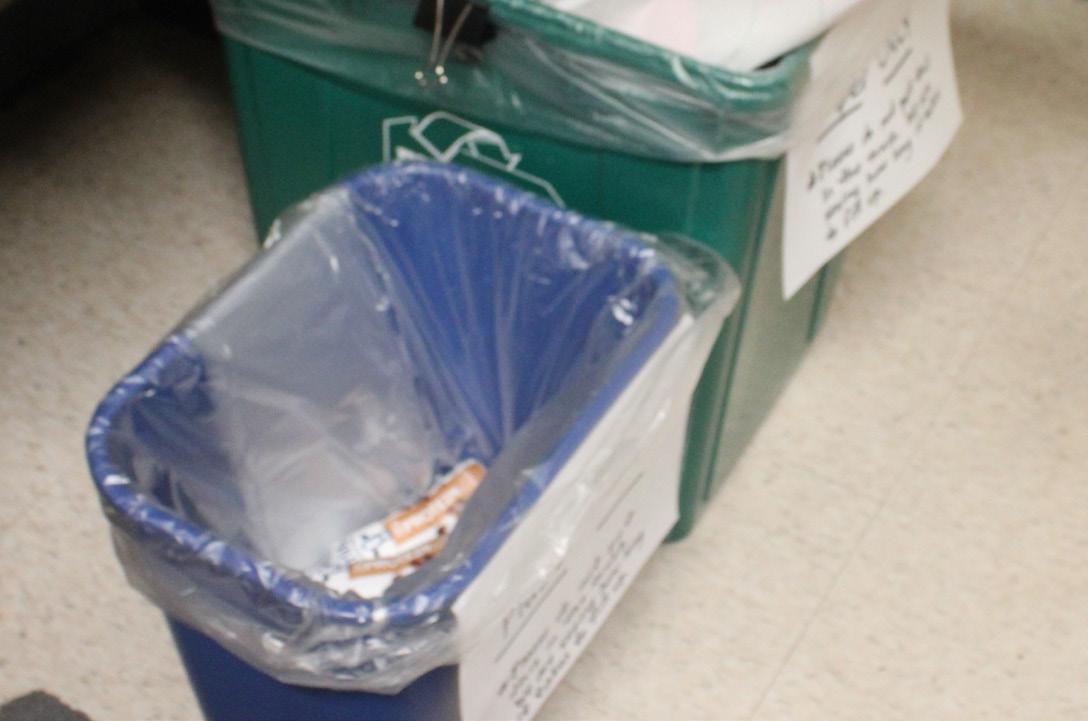
member Karina Shah helped redirect the committee’s goals for the 2025-26 school year.
“The students (on the committee) felt like we were just trying to do this as a means to get the award and the certification, so we shifted gears and are making it a more of a long-term plan,”
Shah said.
Starting in the spring of last year, they kick-started their first project, the paper project, by collecting data from teachers regarding their class paper usage. After, they advocated to distribute more class materials online via Schoology to save paper. For their next steps in promoting sustainability, Shah reveals new projects that the committee will implement this year.
“We’re thinking of putting up posters in the bathrooms just to encourage less paper towel use and less water use,” Shah said. “That’s another place where we can just reduce the impact that we’re having. Do you really need to be using three paper towels when one dries your hands the same?”
This initiative not only creates change for the school but also encourages the seven students on the committee to strengthen their passion for

saving the environment. Senior and board member Sophia Burke believes that the work produced by the Green Schools Committee has im -
pacted her
one
drive. Instead of
delivering individual slips to homerooms for each eligible senior, they delivered stacks of non-customized printed QR codes. Club members also pitched New Voters and its purpose to homerooms rather than simply delivering the QR codes
like in previous years. The club delivered paper forms in the past, but now seniors scan a QR code to fill out the digital form.
“I think the drive this year is a lot more organized, and in terms of execution, I feel like it’s also been carried out a lot better
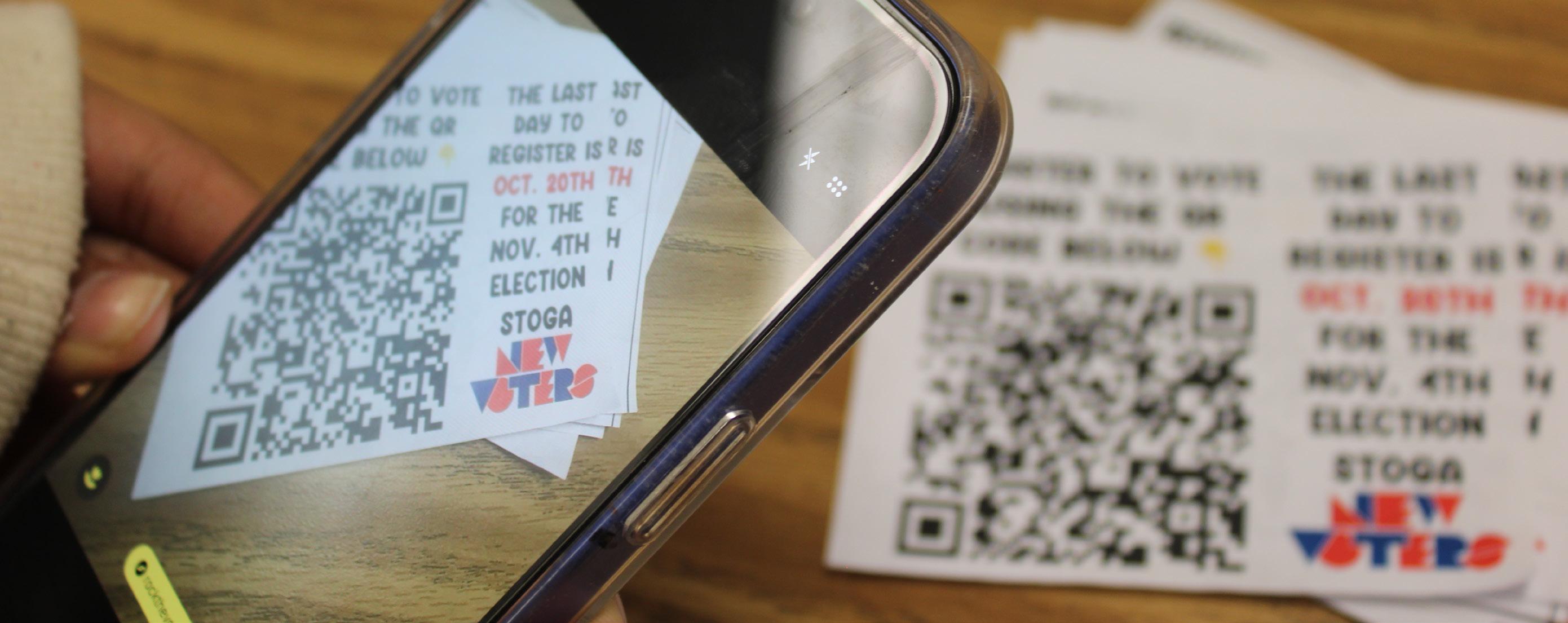
Rishika Bhattacharya and Jeffrey Heng Staff Reporter and Co-Managing Editor
Instead of dancing around classroom desks, senior Anthea Lin found herself swaying gracefully with the help of teachers. On Oct. 23, Spanish 6 students traveled to Salsa in the Suburbs, a dance studio in Media, PA, to immerse themselves in Spanish dancing.
compared to previous years,” senior and board member Kyle Wu said. “Previous years was a lot more unorganized and (we) kind of just went to homerooms randomly instead of checking first to see if there are actually enough people in there that are of age to vote, if they’re 18.”
From the Club Fair, 50 more members joined New Voters this year. The expanded leadership board also contributed to the success of the drive.
“We have a very, very strong board right now. I’ve been doing this since 2018 (and) I would say the first few years here, we had a really strong run,” club adviser Katie Walter said. “COVID was hard, and (the club has) really come back in the past couple years. We have a really strong team who are involved both at the school club level, (and) they are also involved with the national New Voters organization. They’re really investing in what we’re doing, which is awesome.”
In addition to their fall voting registration drive, the club also holds a drive in the spring. Founded at Conestoga, New Voters operates as a national nonprofit and now works with other schools
across the U.S. to promote voting among youth.
“As part of New Voters, I just want to kind of help them understand why their vote matters, and that voting is a constitutional right,” Wu said. “Everybody should have that right to have their voice heard and join in on the conversation, regardless of however they express that involvement, especially in political parties and stuff.”
For the spring primary election, the club hopes to register at least 65% of the senior class to vote to qualify for eligibility for the Governor’s Civic Engagement Award. As more students turn 18 by the spring, the club will visit senior homerooms again to encourage students to register.
“If we look at the 2024 presidential election, only less than 50% of people aged 18 to 29 ended up voting in that,” Wu said. “As part of New Voters, I just want to kind of help (the seniors) understand why their vote matters, and that voting is a constitutional right, and then that everybody should have that right to have their voice heard and join in on the conversation, regardless of however they express that involvement.”
Spanish teachers organized the trip to complement their unit on Hispanic music. As part of the curriculum, students learn about different genres of dance such as salsa, bachata and merengue. This opportunity marked the first occassion Spanish 6 students took a field trip to learn from teachers, an idea that Spanish teacher Ryan Palmer initiated recently.
“For a while, I was doing it in the classroom. We would move all the tables, and I would become, for the day, the salsa instructor,” Palmer said.
“That was really fun, but then it dawned to me, ‘You know what? We could probably expand this and build on (it).’ This year I was like ‘Let’s see if there’s any dance studios nearby.’ And lo and behold, there was.”
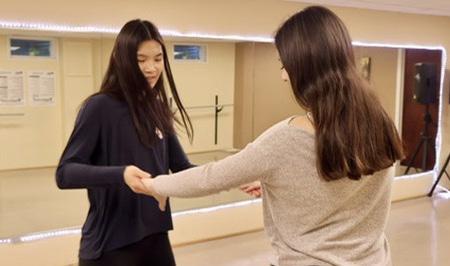
The trip started off with a one-hour dance lesson at Salsa in the Suburbs. Students learned prominent Spanish dance styles. After the first session of students completed their lesson, all students ate lunch at Conestoga before swapping activities. The offerings included traditional Hispanic dishes, such as spiced pork called carnitas, catered by Emiliano’s, a local restaurant in Norristown.
“It (the lunch) was meat, beans, rice, sweet, lemon, onions with cilantro or parsley, pork, some sauce and some lemons,” Lin said. “It was a good experience to eat with my friends too.”
In addition to this excursion, Palmer plans to arrange a tour of New York in December. With these cultural experiences, Palmer hopes his students learn more about the Hispanic culture.
“But I think more than anything, one of the goals of the language classroom is to help students open up their cultural understanding and have them step into the shoes as someone else,” Palmer said “This (field trip) serves that goal more than, ‘what language goal did you learn?’ It’s more of a cultural goal.”

As part of their field trip to Salsa in the Suburbs, a local dance studio, Spanish 6 students eat an authentic hispanic meal of carnitas and beans tgoether for lunch at Conestoga. Emiliano’s, a restaurant in the Norristown area, catered the food along with the required utensils and plates. Spanish teacher Ryan Palmer hopes to organize additional field trips for his Spanish 6 classes in the future, including an excur
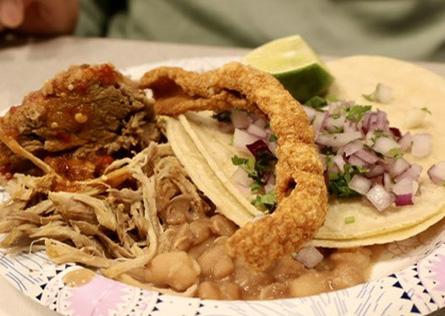
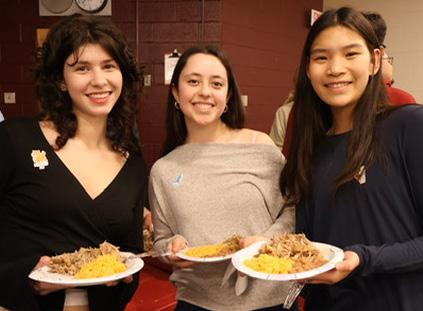


Conestoga is hosting two foreign exchange students this year — senior Riccardo Iannitto and junior Chiara Drebes. Both are attending school through AFS Intercultural Programs, previously the American Field Service, an international nonprofit organization that provides global education and study abroad opportunities for students around the world.
Chiara Drebes is a foreign exchange student from Bavaria, Germany. Her family’s long-standing friendship with her current host family inspired her to join the program. Although she misses her family, her pet dog, Charly, and German food, she is eager to make new memories and learn more about different cultures during her time in the U.S.
Q: What’s your favorite class here?
A: I really enjoy the subjects that we don’t have back in Germany like cooking class and personal finance. We don’t have this many options back home. I’m especially liking personal finance; it’s very interesting and helpful.
Q: Are you participating in any school sports?
A: I’m on the cross-country team. The season’s almost over, but I really enjoyed it. The team was nice, and also the training was good. It was really nice to see how important sports are here, because in Germany there's a lot of importance in club sports but here there’s more school spirit.
Senior Riccardo Iannitto is a foreign exchange student from Sardinia, Italy. He learned about the opportunity from a close friend who completed her own exchange year in Canada through the same program. Although he is adjusting to a surprisingly hot climate and an unfamiliar schedule, Iannitto is excited to take business classes and looks forward to making the most of his time here.
Q: How are you liking Conestoga so far?

A: It’s awesome. I love changing classes. The only thing is that every (class) we have different people, so it’s kind of hard making friends in school. But, now I can say that I finally have friends, so I’m happy. I love most of the teachers (and) the subjects. They are really different from what I’m used to in Italy. I love finance and marketing (and) these kinds of subjects that I don’t normally do.
Q: Why do you believe it’s important to be introduced to new cultures and participate in foreign exchange programs such as this one?
A: To have awareness. I always love to travel, to explore. I’ve been pretty much around Europe, so I always wanted to go to the U.S. to see a new continent and everything. It’s really important to explore new cultures because a person needs to really be curious about what is around them, not (just) their home.
and high school is five years instead of four. The teachers move from class to class.



Rowan Chetty
Inspired by his high school graphics teacher, Noah Austin has always had a passion for technology engineering. Austin, who has been a teacher at Conestoga since 2006, has taught all engineering courses at Conestoga and has worked to design and implement new ones. He currently serves as the Department Chair for the Business and Technology department.
Q: What do you like about teaching at Conestoga?
A: Currently, the thing I like the most about Conestoga is the amazing support that I have gotten to create a program that focuses on engineering that our students can take advantage of. When I first got here, they were teaching traditional wood shop, and now we have a full-blown engineering program (and) a robotics program. We have a lab that rivals colleges in the fabrication area. I have been nothing but supported educationally for how I wanted to push forward and how I wanted to try to test waters or material. I’ve been supported from day one walking into this building.
Q: What is your favorite piece of machinery in the fabrication lab?
A: My favorite piece of machinery in the fabrication lab is the laser engraver. It’s like the workhorse of the space, and it’s used by a lot of the different classes. But just the fact that it can cut and engrave simultaneously is pretty cool. The second-most favorite which I need to mention as well is the ShopBot CNC machine. It’s a 4-by-8 foot computer numeric-controlled cutter head that subtractive manufactures.
Q: What do you enjoy about the clubs you advise?
A: I like the creativity of the clubs I’m in. The robotics club, it’s mechanics, but it’s also, “How can I creatively put these mechanics together to solve this problem?” I enjoy helping students through that problem solving process. On the stage crew side, it’s more the creativity of, “Hey, how do I make this look like this?” What’s cool there is we build downstairs, outside of school. Sometimes some of this stuff comes up to the lab and we get to use the CNC machine, or the screen printing or laser engraver to create aspects or parts of that. I like seeing that process go from idea all the way through to a completed project.
Q: What is your favorite project that your students work on?
A: I can constantly change the activities that we do. I have really enjoyed the 2D assembly projects that we make in the Engineering, Design, Production and Automation class currently. Last year they made birdhouses in that project. But basically they make a two-dimensional drawing of something that has to assemble once it’s off the machine. And I think that that project has been (a) really fun (way) to push students to think in a different way.
Q: Do you have a go-to favorite travel spot?
A: My family has a beach house, and I love traveling to the beach. I have a permit on my truck that allows me to drive up onto the beach and I surf fish with my two boys, and I basically am down there for most of the summer. Another getaway for me is kayaking on lakes in our general area. I like watching the sun go down over the water. It’s one of my favorite things to do. So being anywhere around water and the sun going down is my happy place.
Q: What is a piece of advice you hope to give to your students?
A: Push yourself with what you’re passionate about.
Vaishnavi Sriadibhatla and Lea Ukpere Co-Staff Development Director and Staff Reporter
Leaving behind the humid bustle of Singapore’s morning rush, Conestoga 2011 alumna Meghan Morris steps inside Business Insider Singapore bureau’s co-working space. Morris officially became Bureau Chief on Oct. 3. She joined Business Insider’s New York headquarters as a reporter in 2018 and moved to the Singapore bureau in the later half of 2024. As bureau chief, Morris oversees daily operations and coordinates content production. She manages a team of 10 reporters who work together to keep readers up to date with current events. Morris also collaborates with other Business Insider teams around the world, building on stories that they started.
“I think one of the key differences in my job here versus what I have done in the U.S. is that I just wear a lot more hats because we’re an 11-person bureau,” Morris said. “That means that I just have to do a little bit of everything. There’s a lot more coordination that happens in this role, and I love that.”
At Conestoga, Morris took part in a variety of extracurriculars including serving on the staff of The Spoke, taking part in the Young Life organization and competing on the track team. She served as Editor-In-Chief of The Spoke during her senior year. Beyond her work on the newspaper, Morris also advocated for student press freedom, collaborating with the Student Press Law Center and participating in several journalism conferences nationwide.
“She was very committed not only to The Spoke, but also to state and national scholastic journalism,” said Susan Gregory, a former Spoke advisor. “She was on committees where she worked to ensure that students all over the state and all over the country, were afforded free speech rights.”
Morris credits The Spoke to helping spark her passion for journalism and providing her with resources to grow as a journalist. She finds that the memories she made there helped her realize that it was the path she wanted to pursue.
“I don’t know (if) I would have picked journalism if it were not for the excellent training and exposure that I got as a student journalist,” Morris said.
“The kind of stories that you can do as a student journalist are remarkable in their breadth and scope, just as being a professional journalist.”

When students think of photography as a passion they may think of colorful sunsets, the ocean or luscious gardens.
But for junior Michelle Pechstein, she imagines vintage cars and race cars at different motorsports events.
In February 2025, Pechstein created an Instagram account to display her photography and showcase her love for car photos. Currently, she has shared five posts on the account showing off her unique angle of the racing world.
“It’s (photography) really interesting to me because you can capture so many things. I do really enjoy sports photography,” Pechstein said. “I think that it’s pretty neat when you can capture a whole moment in one photo.” Pechstein’s father, Michael Pechstein, runs a business called Vintage Motorsports, Inc. that manages and repairs vintage cars. Michelle Pechstein follows her father to sports events, posting pictures
of vintage cars on her new Instagram account. Most of the events are held at New Jersey Motorsports Park, which is a motor sports entertainment complex. Michelle Pechstein took a photography class during her freshman year at Conestoga and credits it for helping her learn basic techniques. However, she believes that working with another photographer helped cultivate her photography skills.
“That (photography class) helped me with editing a little bit. But for the most part, it’s pretty much just been me and the man that runs the Vintage Race Instagram account. He helped me out a lot because he is a photographer,” Michelle Pechstein said.
since 1995, specifically focusing on motor photography for several years.
“She (Michelle Pechstein) has grown up at the track and
knew the drivers and many spots,” Silknitter wrote in an email. “We all start somewhere, but even early on, there is an awareness in the pic-
tures. I see some of that in her photos – she is thinking about those things.” Michelle Pechstein also assists with taking photos of the
many motor events that she attends for Vintage Motorsports, Inc. In the future, she hopes to manage the company’s Instagram account.
“I plan on continuing (photography),” Michelle Pechstein said. “I don’t think it’ll be a career, but I’ll make it a long-term hobby that could be a part-time.”

To help her learn advanced techniques, freelance photographer Tom Silknitter assisted her in editing photos, finding good angles and exploring different camera lenses. Michael Pechstein hired and paid him to help with taking and editing photos of the race cars from Vintage Motorsports, Inc. Silknitter has been in journalism and photography Caught

When junior Mawada Atwa walked into her first Middle Eastern North African (MENA) club meeting, she felt an instant sense of familiarity. Surrounded by others who share her culture and experiences, she discovered a space to share stories, traditions and pride with her peers.
“To me personally, it means that I’m involved with people who come from the same culture that I am from, and we can share a lot of things,” Atwa said. “The fact that our school lets us have a club for everyone who shares the same culture is certainly meaningful.”
After many of its members graduated in 2023, MENA became inactive due to not having enough participants. Jomana Mosalem, senior and president of MENA, took over leadership of the club after her friend graduated last year and passed the position
to her. Having lost more than 10 members since 2023, she felt determined to bring the club back on track.
This year, Mosalem and the newly-elected executive board are focused on recruiting new members for the club and encouraging participation. The members remain active on their Instagram account, where they post information for meetings and events ahead of time. The club also encourages its members to bring their friends to their meetings as well. It welcomes students coming from all backgrounds to learn and celebrate Middle Eastern North African culture alongside their peers.
“You don’t have to be Middle Eastern North African to join,” Mosalem said. “It’s open for everyone.”
Following a successful collaboration with the Muslim Student Alliance (MSA) in March 2025, Mosalem realized how meaningful it is for students of different backgrounds to connect with each other.
“Seeing what a great event we were able to host with the MSA and how many people were brought together, it obviously inspired us to keep going,” Mosalem said. “It’s really significant to have this space for everyone where we can all come together and learn about each other’s cultures.”
The club is planning more joint events with other clubs in the future. On Oct. 23, MENA joined Black Student Union and hosted the Fall Gathering, where attendees played games and shared a celebratory meal featuring traditional dishes. With the combined effort of its members and board, the MENA club has gained almost 20 members since the start of the school year.
“I feel like there’s definitely more leadership. More people are involved in the club, and there’s more initiative,” said Abigail Adane, senior and MENA club member. “Last year (the club) was a little disconnected, but now we have a lot more people who are willing to join this club.”
With the hope of incentivizing greater traction to local restaurants, volunteer group The Friends of the Easttown Library started a month-long

‘Taste of Berwyn’ that was a physical event. It was for a charity and it was held on a Saturday. Restaurants came and set up booths, and you paid and got tickets and could eat or try their different offerings. It seemed like a great idea, but it was very expensive and a lot of work on the restaurants and that event finally went away,” said Jane Martin, chair of the Taste of Berwyn fundraiser and staff member at the Easttown Library. “I always thought that was a great fundraiser. I and a bunch of other people were brainstorming as to how we could incorporate Taste of Berwyn without honestly all the work for, not only us, but for the restaurants as well. So we came up with this idea.”
Last year, the program only ran through the month of October. After receiving community feedback about wanting more time to visit local businesses, system coordinators extended the program to include both October and November. Additionally, increased outreach brought the total number of participating businesses from 12 to 16. Martin found that the passport’s success in 2024 facilitated this year’s expansion to implement and grow the system.
“The first hurdle was getting restaurants on board, especially since it was a new event and you had to explain to the restaurants, ‘It’s not a lot of work for you and hopefully you’ll get lots more customers.’ Once we had a track record from last year, it was a lot easier to get the restaurants on board,” Martin said.



Dear mother tongue, I just poured house. Did that sentence make any sense? No? It didn’t to my mom either, when I accidentally texted it instead of “I have arrived home.” One misplaced radical was enough to change the meaning — and to remind me how quickly I’m losing you. You once came naturally. It pains me to admit that, somewhere between picture books and rhetorical analyses, I started taking shortcuts. As I grew older, it became easier to speak, text and think in English. By middle school, I stopped reaching for you except with my family. Now, I

Audrey Kim Co-Opinion Editor
Taylor Swift has built a career on reinvention. From the country charm of “Fearless” to the revenge-fueled “Reputation,” the indie-folk introspection of “Folklore” and the catchy synth-pop of “Midnights,” each album feels like a new chapter in the singer’s life. But with her 12th studio album, “The Life of a Showgirl,” it’s hard not to notice her latest “era” seems less about artistic exploration and more about self-preservation. Swift has often released albums as a counter to previous criticism. In 2014, “1989” leaned fully into pop after critics said she abandoned her country roots. “Reputation” came after intense scrutiny of her personal life and feuds, with narratives painting her as
face the consequences, clinging desperately onto my bilingualism as it wears away, year by year. There’s a popular English saying: a fish out of water. Lately, that’s how I feel when I try to speak you. My mouth opens and closes soundlessly, my head looping through tones, second-guessing every one. When I call my grandparents across the ocean, I hesitate before responding. The cheeky comebacks and quick expressions I once prided myself on now feel scrambled in my mind. Here’s another saying you might recognize: “Playing
Idioms carry centuries of cultural and linguistic identity. This
who can’t quite appreciate it. Sometimes I wonder if that’s me, trying to learn you all
I mess up a simple text. But then I remind myself: Any effort is better than silence.

over again and questioning if my efforts are futile each time
A study from the University of Alberta found that heritage
languages are often lost by the third generation. The pattern is simple: Grandparents speak fluently, parents partly, children barely. It almost always starts with convenience, including switching to English for ease, speed or confidence. The more I shy away from speaking you, opting for words I’m sure of in English to avoid embarrassment, the more I realize how fragile our connection has become.
Still, you have your ways of showing why you matter. A few weeks ago, during a hospital tour with my Allied Health program, I met a woman who didn’t speak English com -
fortably and couldn’t find the right entrance. My sentences were clumsy, far from the polished speech of my 7-year-old self, but they were enough to help her find her way. I’m proud to still carry you, however imperfectly. Sometimes I think about my future kids (a long way off, I know) and worry they won’t speak you at all. How can I teach them when my own syllables still fall unevenly? I’m not alone in this struggle. Researchers at the University of Wisconsin–Madison found that many third-generation Mexican Americans feel ashamed for not speaking “real” Spanish — a linguistic insecurity that fuels intergenerational language loss. I’ve realized I’d rather make mistakes than give you up. If “pouring house” once in a while means protecting against the language and culture erosion that plagues so many second- and third-generation immigrant families, I’ll take it. With love, Lily
“manipulative” or “snake-like.”
And now, “The Life of a Showgirl” appears to respond to critiques of her 2024 album, “The Tortured Poets Department,” which many listeners deemed “overly complex” and “pretentious.” These constant shifts make it difficult to identify a consistent artistic style beyond the adaptability itself. Instead, Swift relies on whatever trend or criticism is most pressing at the time.
Lyrically, “The Life of a Showgirl” is one of Swift’s weakest albums. In response to criticism of “The Tortured Poets Department,” she swings in the opposite direction, favoring simplicity over depth. Modern vernacular, internet slang and brand references plague the album throughout, with phrases like “girl-boss” and “trolling and memes” finding their way into the lyrics. There is also a clear attempt to replicate the tonguein-cheek energy of featured artist Sabrina Carpenter, especially on tracks like “Wood” and “Actually Romantic.” While Carpenter’s style feels authentic to her brand, Swift’s
efforts come across as calculated. After lyrical masterpieces such as “Folklore” and “Evermore,” the new album struggles to meet the high bar Swift has set for herself. Sonically, the album is polished to clinical perfection. The heavily processed vocals and bright synths make the songs sound flawless but feel emotionally mechanical. Unlike Swift’s previous works, where her trademark bridges or choruses build tension and resolution, the melodies here feel unmemorable and underdeveloped. The harmonies are bland, the rhythm is predictable, and even three-minute tracks struggle to hold the listener’s attention.
Beyond the music, the album feels like a product in the most literal sense. Swift has long released multiple versions of her albums with bonus tracks, and while she insisted on the “New Heights” podcast that “there’s not a 13th (song)” and that “there’s not other (songs) coming,” her website soon revealed additional CDs fans could purchase. Today, the album has more than 30 vari-
ants, with Swift selling 2.7 million copies of the album on the first day of release according to Billboard. In addition, her global film release titled “The Official Release Party of a Showgirl” grossed $33 million in its opening weekend, according to an article by Deadline. Still, dismissing “The Life of a Showgirl” entirely would be unfair. Swift’s ability to grab cultural relevance is unmatched, as seen by the mix of public outrage and adoration online after the album’s release. The production is slick, some tracks like “The Fate of Ophelia” and “Opalite” are undeniably catchy, and her playful lyricism may resonate with fans who enjoy a trendier, lighter genre of music. She knows how to pivot and respond to criticism in a way few artists can. Yet, that very adaptability comes at a cost. In chasing commercial success and relevance, Swift sacrifices depth, cohesion and emotional resonance. “The Life of a Showgirl” may sparkle on the surface, but beneath it, it misses the heart that once made Swift’s work unforgettable.


Saktisri Gowrishankar Multimedia Editor
Is the internet really forever? Throughout your life, people have probably advised you to be careful of what you post because the internet is permanent. That’s true — to an extent. There’s an overlooked sensitivity to online information. People have utilized methods of permanent data storage like hard disks, cassette tapes and punched cards since the invention of the computer. But what happens when the source material itself is lost?
When the articles, photos and websites simply vanish?
We live in a postliterate culture where literacy diminishes in necessity as multimedia content advances, according to John Burn-Murdoch, a columnist for the Financial Times. But this shift to online media brings the disconcerting truth that what we consume on the internet won’t always be there.
Accessibility of digital spaces has declined in recent years, especially with an increasing number of publications relying on paywalls. As reading becomes a commodity, we lose access to information we would not have otherwise.
Mary Harrington, a British journalist, found that greater digital media consumption correlates with poverty. U.S. teenagers with household incomes less than $35,000 spend about two more hours on screens than those with household incomes exceeding $100,000. Harrington compares this problem to the wealth divide in healthy nutrition. The internet is enticing junk food, while books are healthy ingredients. It’s clear that the average person is consuming far more information digitally than physically, intensifying the effects of online fragility on the majority of society. The concept of digital decay furthers this dilemma.
A Pew Research study found that in 2023, 38% of global webpages available in 2013 were no longer accessible and around 1 in 5 federal, state and local government webpages contained at least one broken link. Other instances of decay include social media apps locking and banning accounts or the government archiving

material. The disappearance of websites and links not only poses a severe inconvenience to individuals but is also a loss of history.
As a society, we store almost our entire lives on a phone or laptop. Correspondences, documents and photos are largely virtual, serving as an archive of our existences. Losing access to these materials poses a roadblock in preserving history and progressing forward. Our memory becomes murky as we can’t recall if some things have ever even existed.
Still, digital media serves as an invaluable resource. High-speed processing drives our current economic and social advancement, creating an abundance of opportunities for innovation. That’s why it’s important to recognize its fleeting nature. Proceeding with awareness of the impermanence of the internet can help us protect greater knowledge. I advise everyone not to be solely dependent on online information. Reading physical books and newspapers, having face-to-face conversations and keeping a written journal are just some ways we can distance ourselves from postliteracy and focus on the tangible. So, to answer the age-old question: The internet is only sometimes forever.

major health risks, but they’re wrong, as I, a CEO with abso-

lutely no scientific background, can assure you.
Something the FDA did do right was ban Red No. 3, an artificial dye that scientists discovered caused cancer in rats, in January. Surely that must mean that Red No. 40, Yellow No. 5 and Yellow No. 6, which make up 90% of all food dyes in the U.S., are also dangerous. Never mind that, according to Baylor Scott & White Health, those three are safe when consumed in reasonable amounts — just trust me. What even is Baylor Scott & White Health anyway? One of the largest nonprofit health care systems in the nation? Pshh.
No one who isn’t seeking a profit can be trusted. Not only do Definitely Healthy Sugar Balls not contain any artificial dyes, but they are also made with cane sugar! According to a WebMD article medically reviewed by dietician Kathleen M. Zelman, cane sugar comes from sugarcane rather than sugar beets and is less processed than other types of sugar. Sugar beets sound disgusting, and processed sugar strips away all the nutrients in cane sugar. Don’t listen to “experts” like Zelman who say that cane sugar never had any nutrients in the first place and is equally as unhealthy as other types of sugar. Natural equals healthy — it’s just common sense. It’s clear that Definitely Healthy Sugar Balls are definitely healthy. I’ve so eloquently explained the dangers of artificial dyes and processed sugar, and since those are the only two things that make candy unhealthy, by getting rid of them, you can eat as much candy as you want! Just make sure it’s AllNatural.
“I
(Swi

Get your...

six-month training period to log any hours before applying for my driver’s license. After the age of 18, you have full autonomy in terms of working toward getting your license at a pace that feels right for you.
In addition, waiting until you turn 18 to get your permit is beneficial as you have more time to mature as a young adult and can gain more situational awareness for the road. According to the Centers for Disease Control and Prevention, the crash rate per

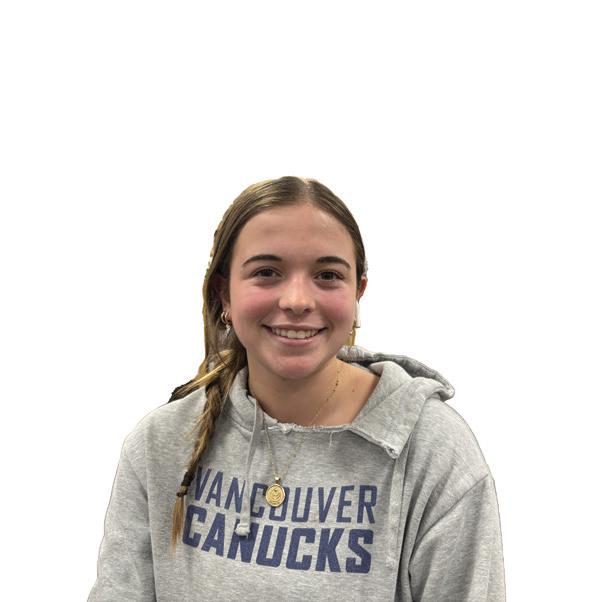

provide individuals ample time to best prepare themselves for not only their permit test, but also when they’re actually on the road. Likewise, you could use the extra time before getting your permit to focus on other priorities.
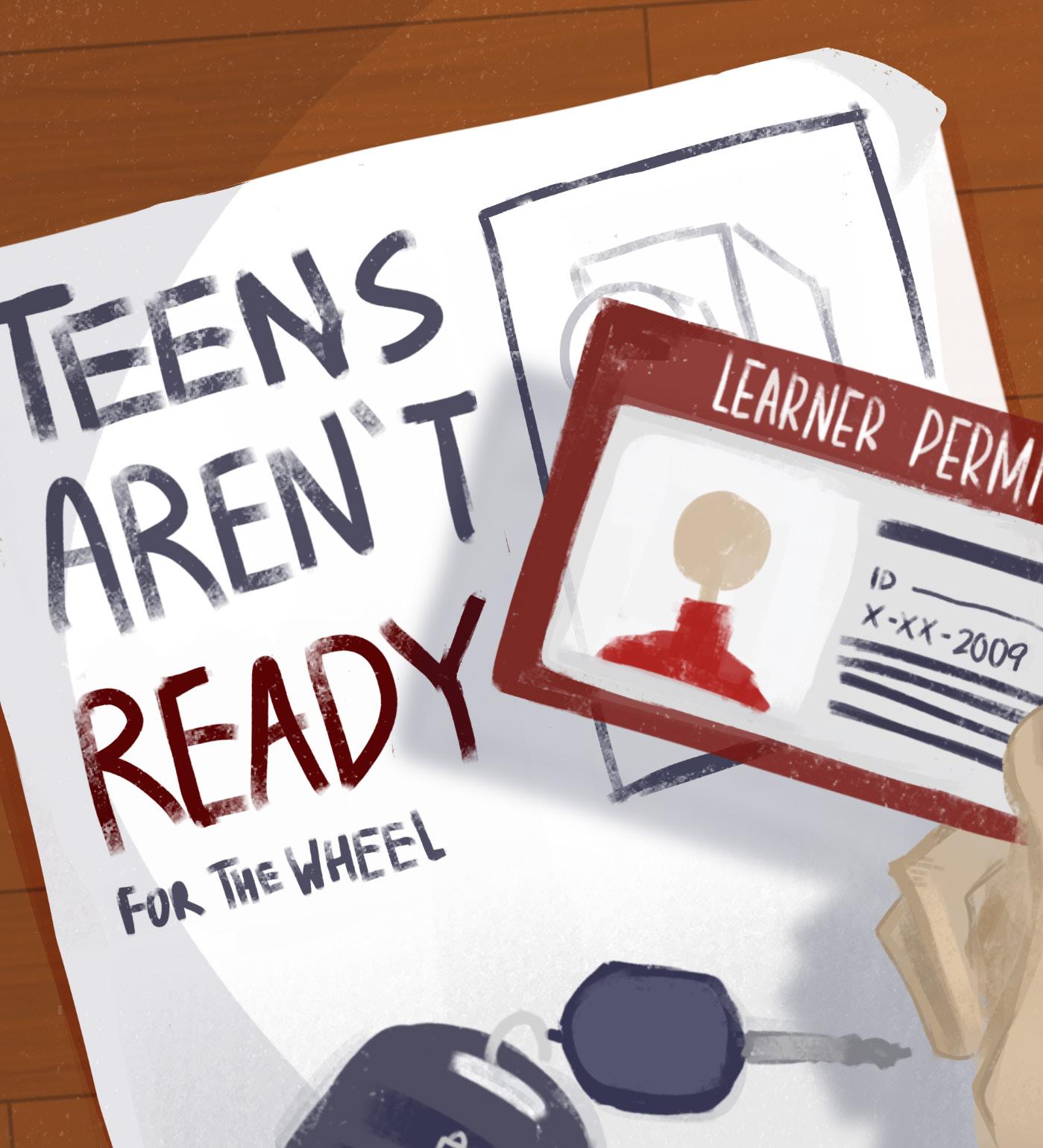
or even after, the
of 18 is not as bad of an idea as
may think. Getting my permit as an 18-yearold has some advantages, such as not having to wait the
mile driven for 16-year-olds is about 1.5 times higher than it is for 18 to 19-year-old drivers. Although the delay may be slightly tedious, waiting a few years until you turn 18 can
Don’t get me wrong; there are lots of advantages to getting your permit before you turn 18. For one, the required training period to log hours of driving in specific weather conditions is a way for many 16 and 17-year-olds to gain valuable driving experience, especially with an experienced adult as a guide. However, getting your permit after you turn 18 doesn’t necessarily equate to having less practice before you get your driver’s license, even if there is no required amount of hours to log. No matter what age you are, everyone should practice driving for however much time they feel is necessary to feel they’ve mastered the required skills — because ultimately, those 18 and older have the benefits of doing so while having more control over their life behind the wheel.

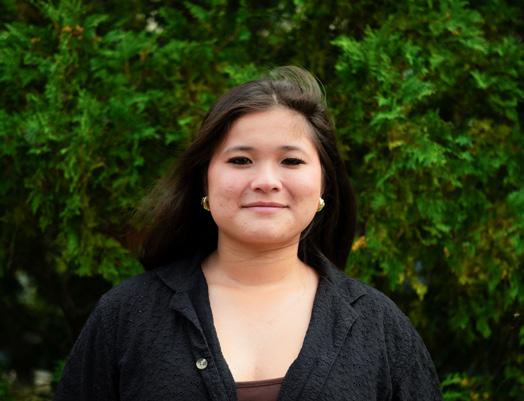
For many teens, 16 isn’t just an age. It’s the start of a journey toward independence and responsibility behind the wheel. In Pennsylvania, teens become eligible to apply for a learner’s permit once they turn 16 years old, giving them time to practice driving under supervision and develop safe habits. The earlier teens start driving with guidance, the more confident, prepared and safe they’ll be when it’s time to drive on their own. Pennsylvania law requires all drivers under 18 to complete 65 hours of supervised driving, including at least 10 hours at night and five in bad weather. This training takes time but builds essential driv-
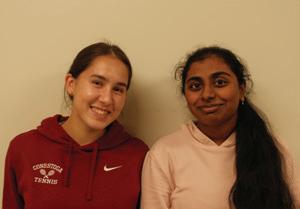
Don’t get your...
ing foundations, like handling unexpected road situations, reading traffic patterns and maintaining focus. In contrast, teens who wait until they are 18 to get their license can bypass these required driving hours, leading to missed learning experiences that help reduce crash risk.
Teens in high school are involved in a range of activities — like jobs, sports, volunteer work and clubs — and being able to drive gives them the freedom to pursue these interests without depending on
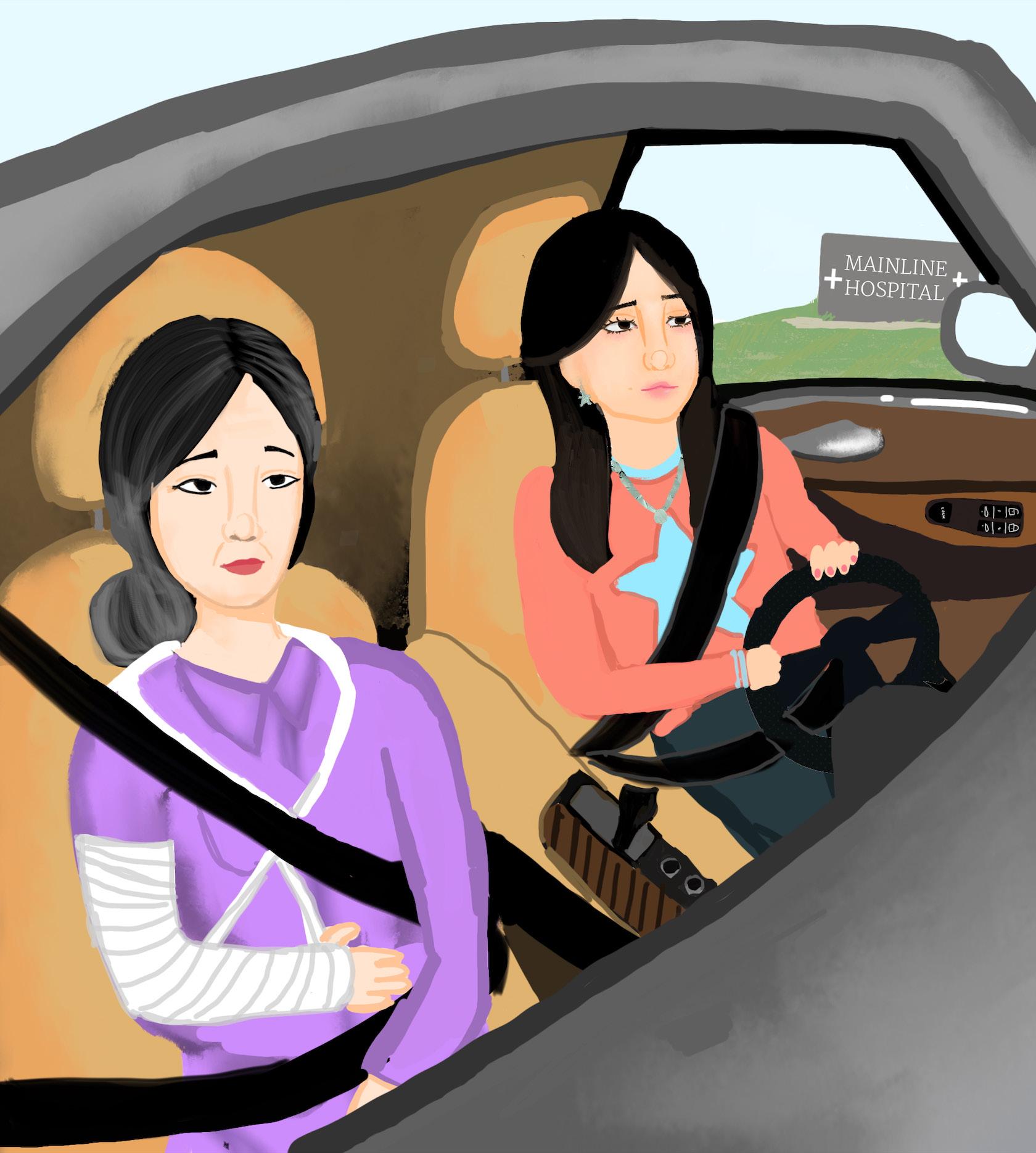
others for rides. That independence teaches real-life skills like time management, self-reliance and responsibility, all of which are important as teens prepare to become adults.
Some argue that teens aren’t mature enough to handle the responsibility of driving, but that’s exactly why starting earlier makes sense. Learning to drive while under the supervision of a parent or trusted adult gives teens the chance to make mistakes and learn from them while in a controlled environment. According to a study by the Governors Highway Safety Association in April 2025, “Teens with more supervised driving practice during the learner’s permit phase have fewer crashes.” Not only does this help make teens more reliable and safe drivers, it gives them more practice with real-world scenarios like driving at night or in bad weather. These early experiences help teens develop better judgment and avoid risky behavior later on when they’re driving solo. The reality is this: Learning to drive takes time, and the more time teens have to practice with guidance, the better. Getting a permit at 16 isn’t about pushing teens into adulthood too soon; it’s about giving them a safe and supported path toward independence.

Players dart up and down the rink, skates slicing the ice and shouts echoing through the arena. However, instead of just wearing helmets on their heads, the players wear special goggles that simulate conditions that those with visual impairments experience.
On Oct. 3, five players from the Conestoga girls’ hockey team traveled to Hatfield Ice to participate in the Blindness Awareness Showcase. Philadelphia Blind Hockey hosted the event and raised money and awareness for visually impaired hockey players. Junior Megan Moroz participated in the event and it allowed her to understand what people who are visually impaired feel.
“I had the cataract (goggles),” Moroz said. “It was all fuzzy. It was different. I had to use different senses to figure out what you were doing. I could see colors well, and who was on my team. But the puck was metal and had little pebbles in it and it was a lot heavier and bigger too.”
Blind hockey is similar to traditional hockey but with key differences, such as heavy, noisy pucks and smaller nets. Philadelphia Blind Hockey is the only blind hockey team in the Philadelphia region, and aims to give visually impaired people the opportunity to play hockey. Moroz enjoyed participating in this event
as it opened her eyes to what the visually impaired community go through daily.
“I thought it was fun to be able to be in this event because I could relate to what (the visually impaired) feel every day,” Moroz said. “It was a fun thing to do and just figure out how everything worked.”
The girls’ hockey players competed on the Black Team, and their opponents were the Orange Team. The event utilized a fullice, five-on-five format. The Orange Team won with a final score of 9-7.
Players wore the goggles to replicate the four major underlying eye diseases causing vision impairment: macular degeneration, diabetic retinopathy, cataracts and glaucoma. They also played with pucks that included metal beads that allowed players to hear and feel the puck on the ice.
Conestoga hockey will join in a practice with Philadelphia Blind Hockey on Jan. 11 and assist the visually impaired players throughout their practice.
“It’s really great to expand the opportunity for any sport to every group that wants to participate,” said Shannon Choe, president of the Conestoga Girls Ice Hockey board. “Philadelphia Blind Hockey is one of the only groups of its kind that’s bringing hockey to the vision impaired community. Anytime anything is making a sport more accessible for everybody to participate in it, it is positive.”

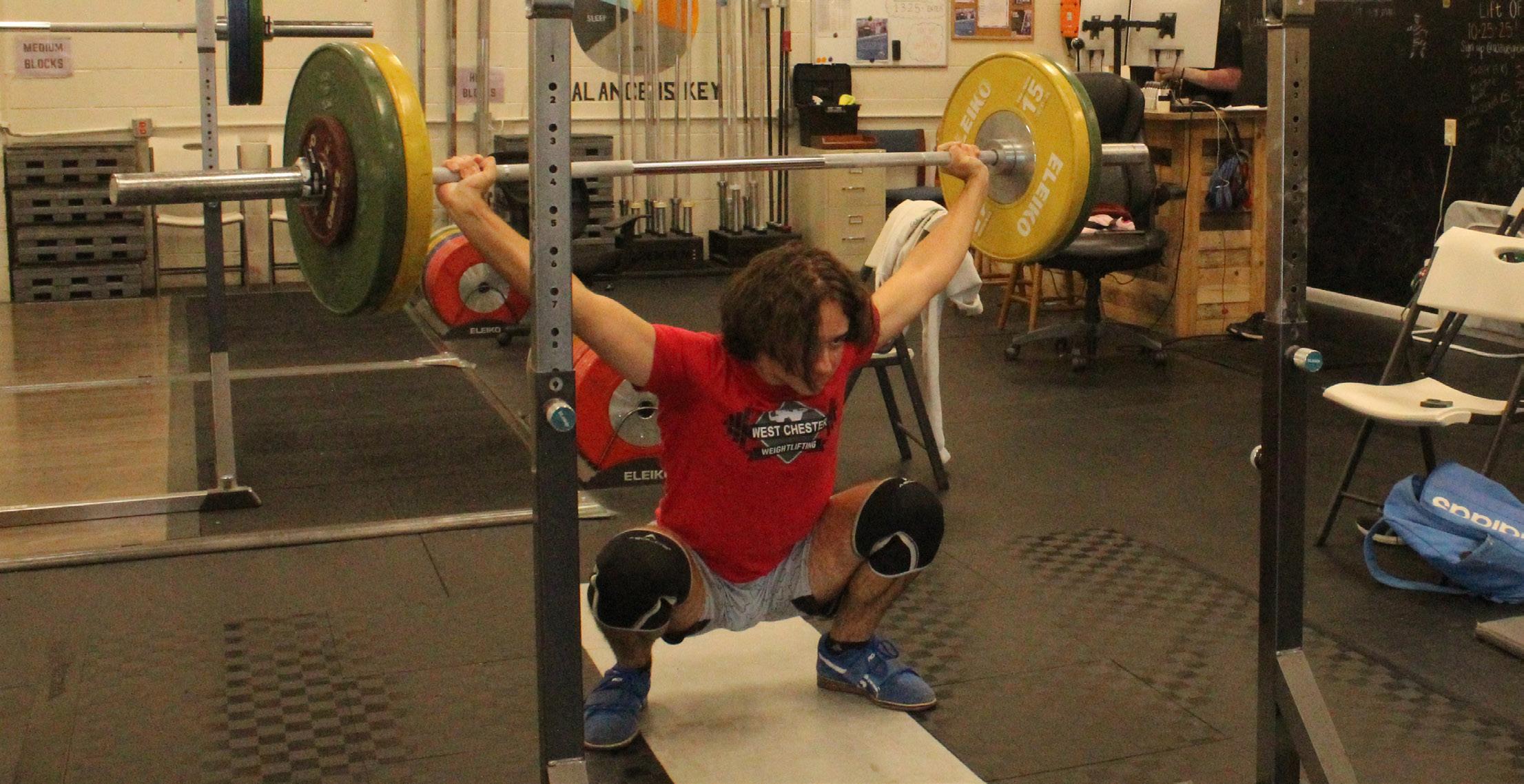
Teagan Penny, William Simon and
The National Collegiate Athletic Association (NCAA) is considering adopting stricter regulations for name, image and likeness (NIL) deals. The rule would require all Division I athletes to register every NIL deal over $600 in value that they signed while in high school. NIL deals allow athletes to be paid by outside companies for promoting or endorsing a brand.
The proposal, stemming from a House v. NCAA settlement finalized on June 6, affects high school juniors, seniors and junior college transfers. The settlement established NIL Go, a centralized clearinghouse overseen by the College Sports Commission (CSC) where athletes would have to report their NIL deals.
“I think there does need to be more regulation, especially because you are dealing with children,” former collegiate field hockey player Heather Zezzo said.
While rare, high school NIL compensation has increased recently, with over 40 states, including Pennsylvania, allowing high schoolers to earn money from endorsements. Certain states, including Alabama, Indiana, Michigan, Ohio and Hawaii, prohibit high school NIL deals.
“I don’t think (high school NIL deals) should be a thing, even if it’s from a company outside (the school) because you’re a child. You’re not a professional athlete at that point, right? I think things
change when you turn 18,” Zezzo said.
According to the NCAA, the rule aims to ensure all regulations are being followed, and to prevent any illegal NIL deals. Pay-for-play deals, which are fake NIL deals where athletes are paid to play for a certain team or school, are a concern that the NCAA looks to prevent. The NCAA also claims that the proposed regulation aims to increase transparency between colleges and the athletes. Soccer coach David Zimmerman has mixed feelings about the implications of the rule.
“I think if people are going to offer to pay you for name, image and likeness, most people would jump through the hoops and follow whatever regulations,” Zimmerman said. “I get that there needs to be more regulation, but I don’t know what the rationale is behind transparency. What difference does it make if they know (their NIL deal) or don’t know? They’re only high schoolers.” As NIL deals continue to become more common in high school sports, the proposed NCAA regulation could reshape recruiting transparency and negotiations, allowing for student-athletes in high school to be better informed and protected as they navigate their involvement in college recruitment.
“It may be helpful in the sense that ultimately, players are getting paid by colleges and there’s going to be a negotiation about how much they get paid,” Zimmerman said. “If you put all the previous payments out on the table, it makes these negotiations easier.”
Sosi Sengal Co-Sports Editor
On Oct. 22, the girls’ golf team ended its season as state champions at the PIAA 2025 Golf Championships at the Penn State Golf Courses in State College, PA. During the season, they also won the Central League Championship for the third time in a row and the District 1 Championship for the second consecutive year. The team ended the season with a record of 4-0. Three of the five state qualified golfers who competed in the individual championship from Oct. 21-22 were from Conestoga.
Juniors Jill Burks and Corinne McReynolds, as well as sophomore Nicolette Bottos qualified for the individual state championship, and tied for 12th and 24th, respectively.
Senior Suri Ahn feels that the team’s journey to states and the work the team put in for the season has paid off.
“Our journey to states was stressful for me with balancing work but it was worth it,” Ahn said. “We worked as a team to win, as we always help each other. I could see the amount of work and hours every team member put in to win.”
Throughout the season, the team emphasized collaboration and support. Members worked together to improve each other’s swings and bunker shots, and practiced encouraging their teammates.
According to Ahn, they helped each other improve during practice and competition, strengthening both individual performance and overall team results, that contributed to their win.
“Winning states was surreal and I was so proud of everyone on the team, even if they didn’t get the opportunity to play in the tournament,” Ahn said. “The team is really good at uplifting each other and being supportive.”
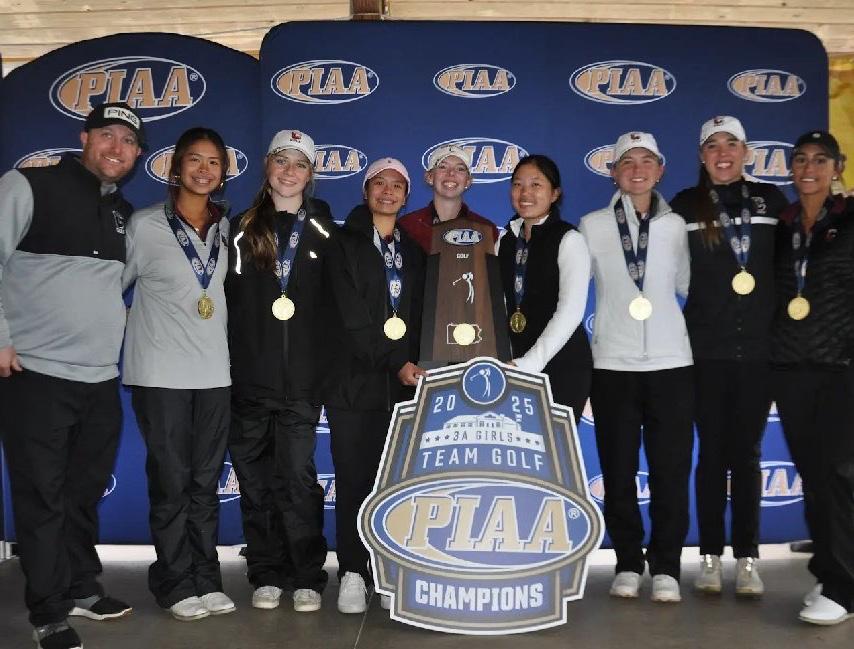
of
loaded with 78
plates. Blagoev started weightlifting at the beginning of his freshman year, hoping to improve his strength for tennis. However, with motivation from his father, he began focusing solely on the sport of weightlifting, a competitive sport that has two lifts: the snatch and the clean and jerk. Currently, Blagoev spends two hours a day, five days a week practicing various weightlifting and strength training movements to develop the two lifts at West Chester Weightlifting with his coaches.
“He’s very consistent and he’s very coachable,” Ryan Marciniszyn, one of Blagoev’s coaches, said. “He started at the right age, so it’s really up to him to
a
keep going and keep training as he gets older.”
Blagoev also practices weightlifting with his coaches in preparation for local and national weightlifting competitions.
According to Blagoev, he did not initially plan on weightlifting competitively, but he decided to try competing. He competed in his first competition six months after he started weightlifting.
“It started off with, ‘I’ll give it a shot.’ I wasn’t really serious about competing. When I started weightlifting, I wasn’t even intending on competing at all, just lifting weight,” Blagoev said. “But then as I competed more, I was more comfortable and motivated by it.”
Most recently, Blagoev placed 13th overall at the 2025 National Youth Championships in Colorado Springs, Colorado, his second National Youth Championship. His first was the 2024 National Youth Championship in Pittsburgh. During his three years of
weightlifting competing, Blagoev’s journey has required persistence and restraint.
“The biggest challenge is the patience that comes along with it,” Blagoev said. “When you start, you obviously don’t go heavy. You’ll be at a low kilo weight, somewhere you don’t want to be, and I’d say consistency is probably the hardest thing to keep up with since you want to go heavy, but you can’t.”
Since he started weightlifting in 2022, Blagoev has progressed in the sport. His current personal record for a snatch is 84 kilograms and 102 kilograms for a clean and jerk. Blagoev aims to continue reaching new personal records, and he hopes to weightlift in college as a hobby in the future.
“It feels nice lifting the heavy weight. It makes me feel happy,” Blagoev said. “I’m hoping I could do it in college, but seeing it’s not really as popular as a divisional sport, I’m hoping to at least continue lifting there.”


In fantasy football, participants act as general owners of teams that consist of players drafted from the NFL, and owners draft a new lineup each week. As the selected players run, pass, catch and score touchdowns in real life, the owner gains fantasy points. The game was created in 1962 and was first made available online in 1985. This year, 14 million fantasy football players marked an all-time record for ESPN and the third consecutive year of growth by 1 million fans, which is only one of many platforms that fantasy football can be played on. Others include Yahoo, NFL.com and Sleeper. Participants can play in leagues with others, and many leagues choose to have a punishment for the member with the least fantasy points at the end of each week or at the end of the season.
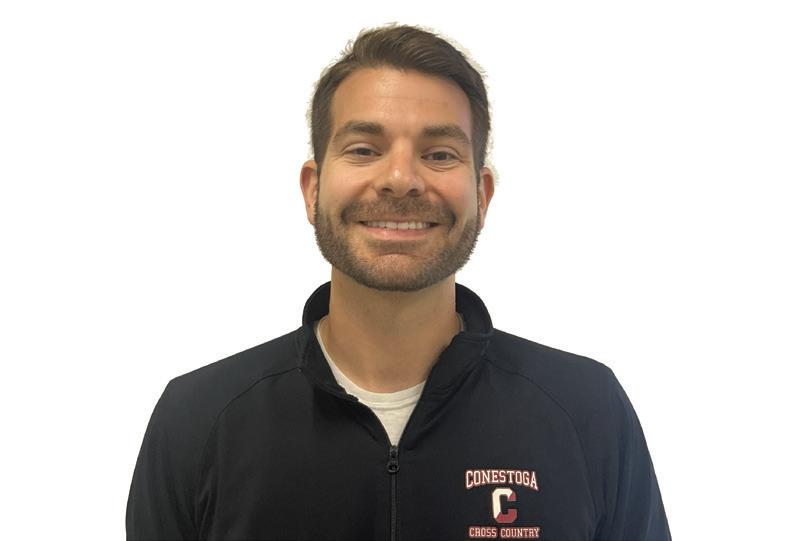
Q: Who's your top pick favorite player right now?
A: Even though I don't like the Chiefs, it's got to be Mahomes. I have Patrick Mahomes and Travis Kelce, so that combo seems to be working out pre y well for me. My worst pick has got to be AJ Brown, who is The Eagles’ receiver and supposed to be amazing but has done nothing.
Q: Does your league have a punishment for the loser?
A: This year our punishment is that (we) thrift out the loser’s outfit and then they have to go to a coffee shop and say their name is Señorita Awesome, and we’re all going to watch from around the shop.

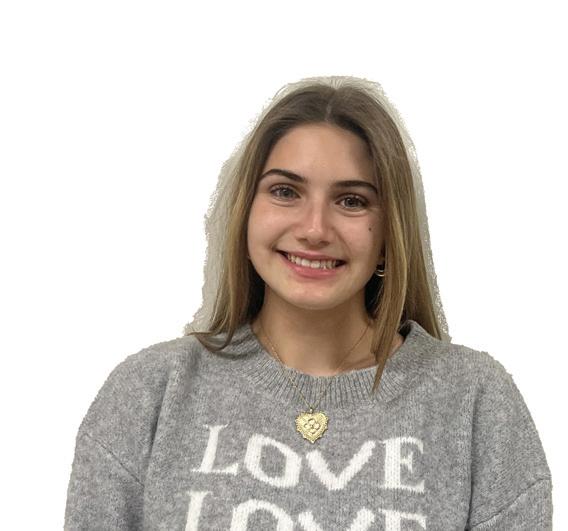
Q: Who’s in your fantasy football league?
Current Stats Fantasy Points 200
• 1,800 passing yards
• 14 passing touchdowns
• 4 rushing touchdowns
• 250 rushing yards
• 2 interceptions
A: My (extended) family has had a league for a while. There's lots of trash talking and then at the end whoever wins gets this li le plastic trophy that switches between houses and gets a t-shirt.
Q: Do you play fantasy football with others?
A: It (fantasy football) is a fun thing to do, but (my dad) doesn't like it too much because when you're playing fantasy football, it changes your perspective (when) watching football because you're mainly cheering for players, not really a team.
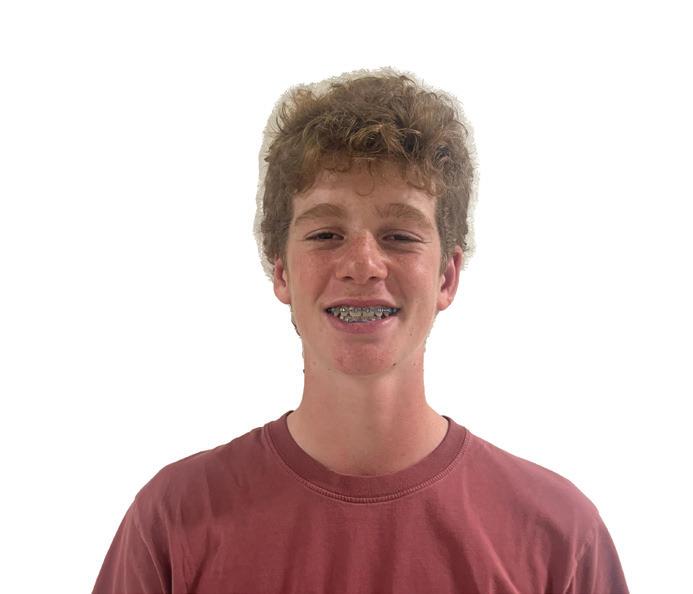




As a talented miniature-golf player, I have always wondered if I could transfer my skills on the putting green to the course. On Oct. 18, I finally found out when I played an 18-hole round at the scenic Turtle Creek Golf Course.
Ryan Ding Social Media Editor hole. We began on the first hole from the standard white tees, providing a moderate challenge for golfers. Starting 340 yards from the hole, I lined up with my driver — and immediately whiffed. Playing it off as a practice swing, I adjusted my grip. This time, I made contact with the ball, hitting it slightly too low but still gaining 150 yards of forward motion. As Lee, Brown and I each took turns hitting, the two of them completed the hole in four shots while it took me six.
Anticipating a great performance that afternoon, I watched “Best Golf Celebrations of All Time | Top 10” on YouTube, ensuring I was ready to celebrate when I inevitably dominated the round.
Seniors Leo Brown and Josh Lee, friends of mine who often play golf casually, met me at the range. We arrived early to go over the fundamentals and practice our swings. Lee taught me to adjust to an overlapping grip, with my pinky between my index and middle fingers for stability and control.
I thought swinging a club would be easy, but on my first try, I hit the ball on the shaft rather than the club, and it flew far to the right of where I aimed. Lee helped me correct my position, and soon I was hitting beauties that were going past the 200-yard mark. All I had to do was transfer that to the actual course. We followed the traditional rules: starting off with a shot from the tees, continuing to play the ball along the course, with the player furthest from the hole going first until everyone made it into the
Starting with hole
hit the ball into a perfect arc that landed five yards from the hole. All I had to do was
tap the ball in and I would receive a par, the usual number of shots a professional golfer would take for the hole. I lined up and tapped a perfect shot right into the hole. Tying Lee and Brown with three strokes, I counted it as a victory. Because it began to get dark, we decided to pack it up and head home instead of playing the last two holes. Afterwards, Lee and I had some great postround reflections at a local Mexican restaurant. Golfing was an eye-opening experience that taught me the value of patience in performance. Though the goal of the game is to finish the round as quickly as possible, I highly enjoyed the time we spent playing and would have played for even longer if conditions had allowed. Introduced by my friends to this new and exciting sport, I hope to play many more rounds in the future.

Raising the bar: Senior elevates his weightlifting game
Page 10
NCAA proposes high school NIL regulations Page 10
Fantasy football frenzy Page 11
Tryoneer Pioneer: Teeing up Page 11
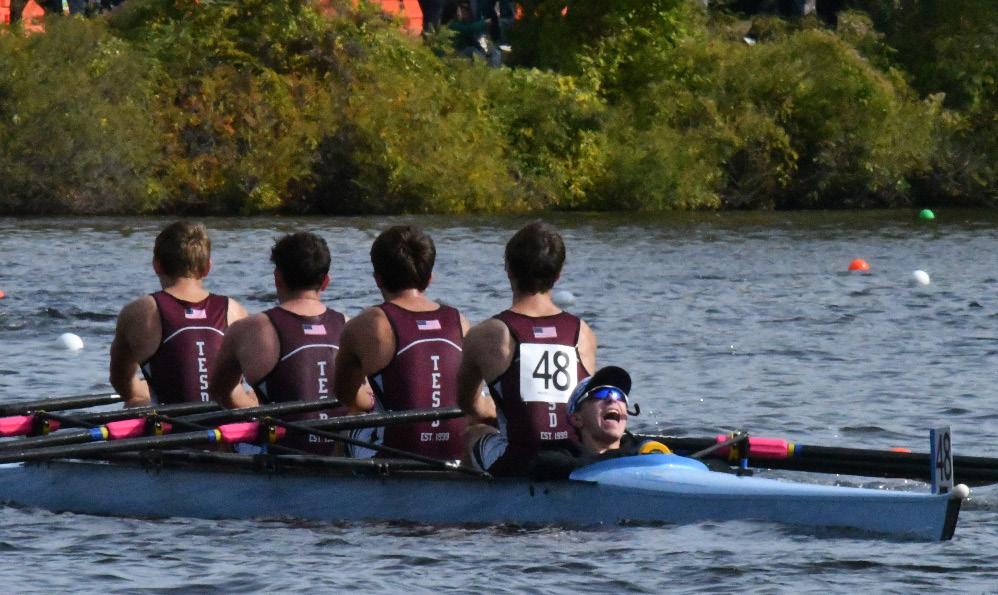
The energy was high on the choppy Charles River as Conestoga’s men’s youth coxed quad was called to the course. Establishing a strong rhythm, the rowers prepared to race their hardest.
On Oct. 19, Conestoga crew sent three boats to compete in the Head of the Charles Regatta for the first time in 20 years. This race is the world’s largest three-day regatta, and took place in Boston and Cambridge, Massachusetts.
“I decided to enter the team (into the regatta) this year because I was really confident that the group would come back after the summer season ready for it,” head coach Bai -
ley Chick said. “I really admire and love the work ethic of this team. I was really excited to see the trajectory of the group of athletes, and to give it a test at the level that (the Head of the Charles Regatta) is earlier in the season.”
Conestoga was the only public school in the nation to place in the top 20. A men’s youth coxed quad, with rowers junior Ethan Borst, senior Hudson Dunkle, junior Kaden Murray, senior Jack Sauder and sophomore and coxswain William Simon finished 15th out of 51 boats, defeating teams from the United Kingdom, China and all other Philadelphia-area schools. A women’s doubles sculling boat, featuring senior Toscane Franchet and sophomore
Emma Reiter, placed 22nd out of 58, but were penalized for missing buoys along the course. Sophomore Maizy Jacobson raced in a singles sculling boat against elite international scullers, placing 37th out of 46 overall and 15th out of the U17 entries.
Since crew is a club sport that represents the school district as well as the school, the boats competed under Tredyffrin/Easttown Sculling Development for this regatta and will continue to do so for the rest of the fall season. When preparing for the race, Franchet hoped that Conestoga’s performance at the regatta would reflect their hard work and help them gain experience.
“I hope that we are able to do our best at the race, because
we’ve never raced (at the Head of Charles) before, and we’ve never raced on the course. It’s going to be a big adjustment, rowing from our home river to over there,” Franchet said. “But I hope that we are able to perform well under pressure and just have fun.”
To compete at the Head of the Charles, a rowing club must apply to enter, and clubs are randomly chosen to participate. However, if a club participated in the regatta previously and placed in the top half of an event, they earn a guaranteed spot in that event in the race the next year.
Sauder, who rowed second seat in the men’s youth coxed quad, believes that a significant difficulty for his boat was adjusting to a coxswain be -
cause Conestoga usually does not race with one.
“The biggest challenge came on (Simon’s) part, since he only got two practices as a cox before the race,” Sauder said. “We trusted that he would study the race course, which wasn’t easy. But he did it, and it paid off.”
Chick believes that all the teams performed well and that they gained valuable experience for the rest of the season.
“I am incredibly pleased with this first showing at the (Head of the) Charles, especially when reviewing where we stack up in the Mid-Atlantic and Philly regions,” Chick said. “This year’s team really invested at a new level and I am optimistic about the way that work will show.”
In the fourth game of the National League Division Series between the Philadelphia Phillies and Los Angeles Dodgers this year, Phillies pitcher Christopher Sánchez threw a pitch that clipped the corner of the strike zone. Instead of calling it a strike, the umpire called it a ball. That pitch would result in the Dodgers scoring a run that tied the game and sent them into extra innings, leading to the Phillies ultimately losing the game and the series. Starting in 2026, a new system will ensure critical moments like that can be challenged and corrected through a new system: the Automatic Balls-Strikes (ABS) system. Immediately after a pitch, the hitter, catcher or pitcher can challenge the call of the pitch. The jumbotron or broadcast will display a view of the pitch using existing HawkEye technology, and officials will
uphold or overturn the umpire’s call. Teams receive two challenges per game, and can keep their challenges if they correctly overturn calls. This new system will be the much-needed filter on the umpires and prevent situations where one faulty call can be the deciding factor in a game. It has happened too many times now in MLB, where a team is fighting to win a game or stay alive in a playoff series and an umpire messes up a call, which unfairly dooms one of the teams. According to Umpire Auditor, a platform that tracks missed calls by umpires, MLB umpire Laz Diaz called a strike on a pitch that was 6.83 inches outside the 17 inch MLB strike zone in a 2025 game between the Tampa Bay Rays and the Texas Rangers. Fans and players find it infuriating when umpires take the opportunity of victory and nothing can be done to rectify the call. In fact, MLB conducted a 2025 survey that revealed that
72% of fans found the new system to have a positive impact on their fan experience.
Traditional fans may object because they view umpires being imperfect as a part of the game of baseball and don’t want that aspect to change. Fans have used the traditional argument against changes like the pitch clock and runner at second to start extra innings, which are now generally approved of by fans, according to MLB.
Some critics point out that the ABS system adds time to games. But, as the new system was being tested during Spring Training in 2025, the average challenge added only 13.8 seconds to the games, which is a small price to pay for the correct outcome to the call. The MLB implementation of the new ABS system is much needed and a major improvement to the accuracy of the game of baseball, and will prevent one bad ball or strike call from deciding a game.
